.png)

The Writer's Workout
Be a better writer..
- Kaitlyn Connors
- Nov 17, 2022
“And It Was All a Dream!”: Writing Dream Sequences

Dreams are the most organic stories we have. They are the unconscious mind at work, conjuring freely and without intervention. Many a writer has been inspired by their dreams, and there are countless stories that note the parallel between dreaming and storytelling. It makes sense, then, that dreams often play a crucial role in the structure of fiction. So, let’s explore the construction of dream sequences, and consider how dreams can serve your story’s aims.

Dream Logic
It’s funny that there should be logic to writing dreams since they themselves generally lack any logic. This gives a writer a great deal of freedom, but can also present a challenge—how do you write something that makes sense, when there are no rules?
Dreams are unstable, transitory territory, and your writing of them should reflect that. Make them strange, unusual, upsetting, and illogical. Dreams should be decidedly separate from the waking world of your story.
One of the best examples of this that I have seen is in The Sandman comic book series. Dreams in The Sandman are visually distinct from the rest of the story’s text and are unique to each character, like a fingerprint. Moreover, they require a good deal of deciphering. That is, they aren’t as obvious as story events in the waking world might be. Yet they give us a privileged glimpse into characters and present a different perspective on the story’s events.
Now that we’ve got a little understanding of how dream territory looks, let’s examine a few famous examples of dreams in fiction, what storytelling functions they serve, and how you can use these techniques in your own writing.

Solidify Themes and Character
After arriving at Wuthering Heights, Mr. Lockwood has a rather unusual nightmare. In the dream, he is forced to listen to an abysmally boring sermon which he interrupts and condemns the speaker. Immediately, the entire congregation descends upon him while the speaker of the sermon eerily pounds upon the church’s floorboards with his walking stick.
Lockwood wakes abruptly thanks to the sound which he realizes is in the waking world as well. The steady noise echoes against his windowpane. He goes to remove the offending branch, and instead, finds himself gripping a cold, dead hand.
This is one of the most famous moments in Emily Brontë’s Wuthering Heights , but Lockwood’s dream is often overlooked in favor of the dramatic specter he encounters. The nightmare, however, plays a crucial role in the creation of suspense and ambiance.
First, the dream continues and amplifies the motif of violence and suppression in Wuthering Heights. S pecifically, it parallels a startling instance a few chapters prior where Lockwood is again descended upon by a group: this time Heathcliff’s pack of vicious dogs. Thus, we have a glimpse into Lockwood’s mind while the atmosphere of fear is brought to the forefront. The nightmare also prepares us for the appearance of the ghost as the world of fantasy and the logic of dreaming blend with the waking world. Psychically, the reader and Lockwood find they are still in a dream, a terrifying place to be in a world of lasting consequences.

Foreshadowing and Dramatic Irony
In Julius Caesar , the eponymous character is warned in several different ways to “beware the Ides of March”. Fatefully, he does not. One of the most memorable instances and the one that comes the closest to persuading him not to attend the Senate is a warning from his wife, Calpurnia, after she prophetically dreams of his murder.
This dream foreshadows Caesar’s untimely demise, but more crucially, it provides dramatic irony. Shakespeare’s audience already knows that Caesar will die. His refusal to heed his wife’s warnings renders his death more emotionally resonant because we know that it could have all too easily been prevented.
Thus, tragedy is created through the heightened state of dreaming, and the world of Julius Caesar becomes more complicated and expansive. And, as in Wuthering Heights, the worlds of dreaming and waking are ambiguously blended.

Reveal Characters’ Pasts
Another story that dwells in the ambiguity between sleeping and waking is Charles Dickens’ A Christmas Carol . Through vivid dreams, Scrooge learns the effects of his actions upon his past, present, and future, and makes the decision to become a better person. One of the cleverest uses of dreaming in this text is the exploration of Scrooge’s past. Rather than simply telling us how Scrooge became the person that he is, Dickens shows us, making the backstory immediate, visceral, and interactive.
Dream logic, however, still applies. The memories that Scrooge visits with the Ghost of Christmas Past are unstable and constantly shifting. They are more complicated than flashbacks and take on the shadowy characteristics of dreams. Thus, this story sets up an interesting internal conflict and dramatizes it in a compelling way through the interactivity of dreams.

“It Was All a Dream!”
The trope of discovering that events thought to have taken place in a story’s reality were actually in the mind of a character is one that’s often scoffed at. But I don’t think there’s anything inherently wrong with it. Plenty of stories such as Alice in Wonderland and The Wizard of Oz have used it to great success. The secret lies in the impact that the dream has.
Not only should the dream conform to dream logic, but it absolutely must have an impact on the story. Otherwise, you’ve just cheated the reader of valuable time. As a general rule of storytelling, everything on the page must matter, and the unreal is no exception.
A story, much like a dream, is a fragile, tenuous thing. It has no inherent value but garners its importance from the weight we instill it with. To quote Shakespeare’s Prospero, “We are such stuff as dreams are made on.”
Author Bio: Kaitlyn Connors is a rising senior at Smith College studying English with an emphasis in creative writing. She is fond of coffee, Shakespeare, light breezes, the sound of crisp page turns, moths, goosebumps, bad drawings of cats, and the general vibe of autumn. She is currently studying abroad at Oxford University. More of her work can be found at www.thesunsetowl.com .
Recent Posts
How to Write the Perfect Ending
Writing Rising Action
Research for Creative Writers
- PRO Courses Guides New Tech Help Pro Expert Videos About wikiHow Pro Upgrade Sign In
- EDIT Edit this Article
- EXPLORE Tech Help Pro About Us Random Article Quizzes Request a New Article Community Dashboard This Or That Game Happiness Hub Popular Categories Arts and Entertainment Artwork Books Movies Computers and Electronics Computers Phone Skills Technology Hacks Health Men's Health Mental Health Women's Health Relationships Dating Love Relationship Issues Hobbies and Crafts Crafts Drawing Games Education & Communication Communication Skills Personal Development Studying Personal Care and Style Fashion Hair Care Personal Hygiene Youth Personal Care School Stuff Dating All Categories Arts and Entertainment Finance and Business Home and Garden Relationship Quizzes Cars & Other Vehicles Food and Entertaining Personal Care and Style Sports and Fitness Computers and Electronics Health Pets and Animals Travel Education & Communication Hobbies and Crafts Philosophy and Religion Work World Family Life Holidays and Traditions Relationships Youth
- Browse Articles
- Learn Something New
- Quizzes Hot
- Happiness Hub
- This Or That Game
- Train Your Brain
- Explore More
- Support wikiHow
- About wikiHow
- Log in / Sign up
- Education and Communications
- Fiction Writing
- Writing Novels
How to Write Dream and Nightmare Sequences Your Readers Will Love
Last Updated: July 24, 2024 Fact Checked
- How to Write a Dream Sequence
- Purposes of Dreams
- Types of Dreams
This article was reviewed by Gerald Posner and by wikiHow staff writer, Dev Murphy, MA . Gerald Posner is an Author & Journalist based in Miami, Florida. With over 35 years of experience, he specializes in investigative journalism, nonfiction books, and editorials. He holds a law degree from UC College of the Law, San Francisco, and a BA in Political Science from the University of California-Berkeley. He’s the author of thirteen books, including several New York Times bestsellers, the winner of the Florida Book Award for General Nonfiction, and has been a finalist for the Pulitzer Prize in History. He was also shortlisted for the Best Business Book of 2020 by the Society for Advancing Business Editing and Writing. There are 10 references cited in this article, which can be found at the bottom of the page. This article has been fact-checked, ensuring the accuracy of any cited facts and confirming the authority of its sources. This article has been viewed 3,412 times.
Dreams can be such an effective and compelling way to move the plot forward in a novel—but it can be tricky figuring out how to write a dream sequence that isn’t hoaky or unbelievable. While you're free to use creative license here, there are a few rules of thumb that could help you get started. Below, we’ve outlined the common traits of effective dream sequences, the purposes and uses of dreams in fiction, and the many different types of dreams your character could have, plus what to consider when formatting your dream scene.
Things You Should Know
- Use a dream sequence to push the story forward in some way—for example, by shedding light on a character's fears or desires, or foreshadowing future events.
- Employ logic in your dream sequence, but try not to be too logical: dreams tend to be surreal and vivid and often don't make much sense upon waking.
- Use symbolism in the dream to express a character's complex abstract thoughts, fears, or desires in concrete and compelling ways.
How to Write a Compelling Dream or Nightmare

- You may not know from the get-go what your dream sequence contributes. This might be something you figure out as you write (and rewrite and re-rewrite) your story , so don’t feel pressure to know everything before you’ve even begun writing.

- For example, while in real life, you might walk to the fridge to get an apple, in a dream, the apple might suddenly appear in your hand, or you might find it in the closet and not think anything of it.

- Note that using vivid imagery doesn’t mean over-describing—a few well-selected words can paint a more vivid picture than 100 poorly-chosen ones.

- For instance, your character might fear death in their day-to-day life, but in a dream, instead of having them or someone close to them die, you might represent their fear with a giant black cement block looming over them or a shadowy closet or something else totally ominous that helps the reader better understand their anxiety.

- Narrating the book in the character's vernacular and expressing every thought and emotion clearly would be an example of almost no narrative distance.
- On the other hand, a narrator who offers almost none of the character's subjective thoughts or feelings, and only describes the character's actions in objective terms, creates significant narrative distance.
- While prescriptivists might argue you need to maintain the same amount of narrative distance throughout a story, as long as you have a clear purpose for changing the narrative distance, it can be extremely effective.

- Just telling us what happens in the dream might be vaguely interesting (“I floated up to the ceiling and then a sentient cheese puff told me I was going to die”) but unless readers get a sense of how your character feels about what’s happening, they may write off the whole scene as unimportant—or worse, a waste of time.
What are dream sequences in novels for?

- For example, in Charlotte Brontë’s Jane Eyre , Jane is told that dreaming of a child is a bad omen; the more time she spends in Mr. Rochester’s mysterious house and the closer she comes to a precarious romance with him, the more she herself dreams of children—hinting to the reader (as well as to Jane) that there is trouble ahead. [5] X Research source

- For example, if your character’s marriage is suffering, you might have them dream about their partner having no face or substitute their dream-partner with another person or thing to illustrate that they feel distant from them or as if they don’t know them anymore.

Types of Dream Sequences

- You might even opt to give your character hypnopompic hallucinations : visual, auditory, or tactile hallucinations experienced as a person is waking up. [6] X Research source
- Giving your character sleep paralysis can add an extra layer of horror: sleep paralysis is just a temporary loss of muscle control after falling asleep or waking, but it can be quite alarming for the sleeper and often involves hallucinations or the sensation of being suffocated. [7] X Research source

- You could give your character a lucid dream as a way to show what would happen if they had their way in real life: what would they do? How would others react?

- You might even have your character connect with someone who has passed on: maybe they receive guidance from their deceased mother, for instance.
How to Format a Dream Sequence

- You may also opt to keep the formatting the same throughout, but explicitly indicate that the character is dreaming, as J. K. Rowling does in Harry Potter and the Chamber of Secrets : "He dreamed that he was on show in a zoo, with a card reading UNDERAGE WIZARD attached to his cage." [10] X Research source

- An example of a novel in which the reader is by design uncertain which scenes are really happening and which are merely dreams, fables, or the character’s imagination is Kate Bernheimer’s The Complete Tales of Ketzia Gold . [12] X Research source
Expert Q&A
You might also like.

- ↑ https://screencraft.org/blog/simple-way-to-make-dream-sequences-and-flashbacks-work/
- ↑ https://www.psychologytoday.com/us/blog/out-the-ooze/201801/the-freudian-symbolism-in-your-dreams
- ↑ https://prowritingaid.com/art/437/Is-it-Ever-OK-to-Use-Dreams-in-Your-Novel.aspx
- ↑ https://victorianweb.org/authors/bronte/cbronte/gordon15.html
- ↑ https://www.sleepfoundation.org/how-sleep-works/hypnopompic-hallucinations
- ↑ https://www.sleepfoundation.org/parasomnias/sleep-paralysis
- ↑ https://www.ncbi.nlm.nih.gov/pmc/articles/PMC2737577/
- ↑ https://www.york.ac.uk/research/impact/dreams-nightmares-complex-trauma/
- ↑ https://www.the-leaky-cauldron.org/features/essays/issue1/dreams/
- ↑ https://www.uapress.ua.edu/9781573660969/the-complete-tales-of-ketzia-gold/
About This Article

- Send fan mail to authors
Did this article help you?

Featured Articles

Trending Articles

Watch Articles

- Terms of Use
- Privacy Policy
- Do Not Sell or Share My Info
- Not Selling Info
wikiHow Tech Help Pro:
Develop the tech skills you need for work and life

Dream Sequences: How to Craft Them While Avoiding Common Pitfalls
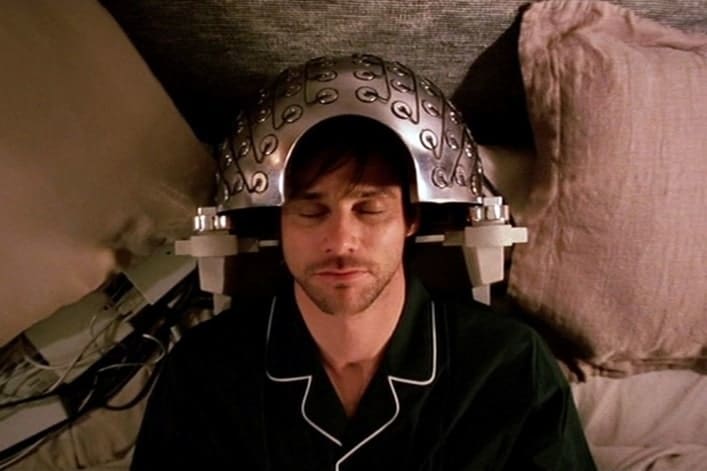
Table of Contents
Dream sequences: avoiding the lazy screenwriter’s crutch, apply consistency and logic to the chaos, eternal sunshine of the spotless mind, three ways dreams can compel your character, 1. the realization dream, 2. the inner conflict dream, 3. the premonition dream, black panther, spot the difference.
It was all a dream! First the audience gasps. Then they sigh and roll their eyes. Through overuse and poor execution, dream sequences have unfortunately become a lazy screenwriting tool that often offers little to the overall story.
How many times does an audience have to witness a character die a horrific death only for them to spring upright in bed? It can seem a cheap tactic, one that attempts to heighten the stakes for the audience whilst simultaneously creating no lasting consequences. Quite simply, it is a fake-out.
In addition, screenwriters have begun to lean on the dream sequence as an easy way to communicate exposition . This is because they are trying to follow the age-old rule of screenwriting , ‘ show don’t tell ‘. However, rather than trying to find ways to visually communicate a character’s backstory or motivations within the story, they slap it in a dream sequence and hope for the best.
By doing so, they are missing out on what makes dream sequences so powerful. What is more common to the human experience than our nightly hallucinations? Dreams are a uniquely human concept. You can use them to delineate a character’s complex nature in a subconscious rendering of their innermost thoughts, feelings and fears.
If you use dream sequences to convey themes, influence your character arcs or even make them part of the story structure itself, then there is a place for them in your screenplay. Don’t use them as a crutch, or a way to solve a plot hole. Just use them as a visually interesting way to tell your story that may, in turn, help your screenplay stand out.
Treading the Line Between Surreal and Reality in Dream Sequences
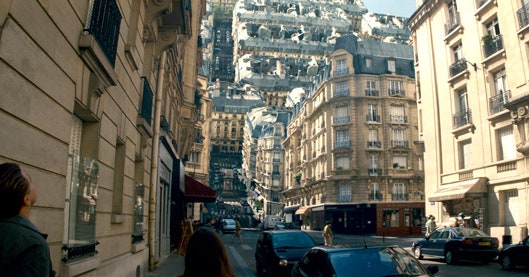
Dreams have often provided writers with fascinating material from which to work their magic. After all, everybody dreams. Therefore, you would think dreams would be an easy thing to write about.
You think that because anything can happen in a dream then surely anything can happen in your dream sequence. You begin to create wild landscapes of immense possibilities, where anything goes. Alas, all you have succeeded in doing is pulling your audience right out of the story.
Unfortunately, dreams’ colourful and chaotic natures, the very thing that makes them so vibrant and interesting, is also what makes them difficult to realistically create. Poorly written dream sequences generally fall into one of two mistakes…
- The sequences throw all logic and reality to the wind in favour of bombarding the audience with surreal imagery and madhouse chaos.
- This is effective if all you are trying to do is treat the audience to a moment of visual spectacle.
- However, it also succeeds in highlighting the artificiality of the dream by stretching the audience’s suspension of disbelief too far.
- It may be a fun way to demonstrate how imaginative you are but it doesn’t do much to serve the story or your characters.
- The sequence behaves too much like reality.
- The scene is therefore much better able to service the characters and plot because as far as the audience is concerned nothing has changed.
- However, in doing so you lose the fantastical elements that make the dream sequence so special in the first place.
- The sequence might as well not be a dream at all. As far as the execution is concerned, it may as well just be a flashback.
So before you sit down to write your dream sequence, you must devise a balance between writing a surreal scene and one that simply appears like everyday life. Too much chaos and the audience will fail to see the point your sequence is trying to make. Too much realism and the sequence stops becoming a dream at all.
Films such as Inception and Eternal Sunshine of the Spotless Mind expertly achieve this middle ground to create powerful dream sequences.
- The former employs dreams as a form of espionage to infiltrate someone’s mind. The latter creates dreams as part of a memory-erasing programme.
- Both premises of the dream sequences sound pretty outlandish. But they manage to tip the scale in an even direction by applying their own rules. During the set up of both films, the audience learns the clear guidelines of how the dreams work.
- In Inception , we know all the dreams have an architect that designs the dreams, which the dreamer then fills with their subconscious.
- In Eternal Sunshine of the Spotless Mind , we know that each dream represents a memory that will appear in reverse order and start to fade as it begins to erase. Whilst these are arguably memories rather than dreams, the way they manifest cinematically is as dreams, particularly as Joel lies asleep as his memories are accessed.
These films don’t strain the audience’s suspension of disbelief by breaking the reality of the world. They follow the rules they established themselves in the opening act. By doing so, they make true chaos believable.
In other words, they create realistic dreams where audiences can enjoy surreal moments without losing track of the story’s reality.
Dream Sequences That Create Subjectivity
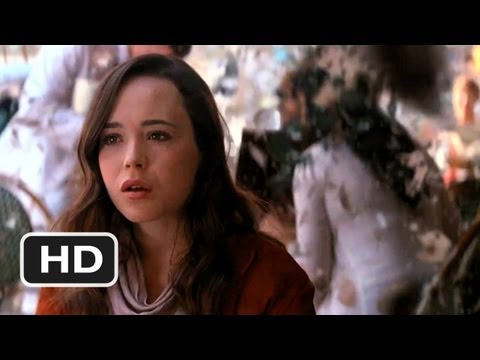
After finding the delicate balance that must exist within your dream sequence, you then need to determine what function this storytelling device will play in your screenplay. The first and most notable example of the use of dream sequences in screenwriting is to create moments of subjectivity for your audience.
Subjectivity is creating the experience of thinking or feeling like one of your characters. It is a mental representation of an event rather than a physical one.
Filmmakers bring the audience into their characters’ minds through clever camera tricks, editing, lighting or sound. Screenwriters do the same thing in different ways. They find means to translate complex human emotions through a character’s interactions, conflicts and transformations.
What the dream sequence provides then is an opportunity for writers to delve into the emotions deep within a character. They can weave together memories or longings so that the audience can experience a character’s subconscious thoughts and feelings.
These could be things the characters themselves didn’t know, things they are too afraid to admit to others or things they bury deep within their mind. Whatever the case, the key to writing a powerful dream sequence is that they become a visual way to communicate your character’s mental state. By doing so, you provide a less objective look at that character and go deeper, beyond their senses and into their mind.
Keeping with our two previous examples, you will see how the filmmakers of Inception and Eternal Sunshine of the Spotless Mind utilized their dream sequences to make the audience experience their protagonist ’s deepest emotions.
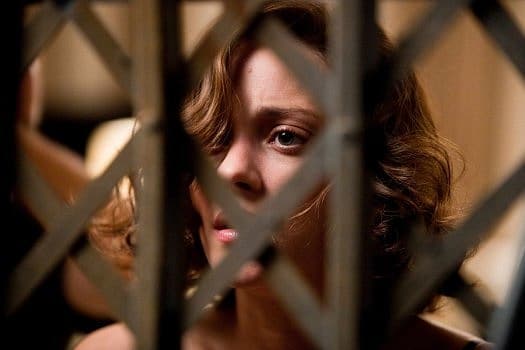
During one of the many dream sequences in Inception , the audience sees that the central character, Cob, is using the dream-sharing device to visit past memories. These include his dead wife, Mal, whose suicide Cob feels personally responsible for. The filmmakers use this particular scene to demonstrate Cob’s inner guilt, which drives him throughout the story.
Each memory represents the floor on an elevator, each containing moments that Cob regrets. All he has succeeded in doing is building a prison of memories where his wife is alive and he goes to torture himself every time he dreams.
The audience takes a tour of Cob’s guilt throughout the sequence. It ends in the basement, where he hides the night of Mal’s death and where the iron bars of the elevator holds her projection inside. The audience witnesses how deep the character has tried to bury these feelings and how much he is ashamed by them.
In the final dream sequence of the film, Joel is reliving the last (but also the first) memory of him and his ex-girlfriend in an empty house by the sea. Soon, the memory starts to erase and the house begins to crumble around them. The incoming waves wash away the remains of the house and the last remaining moments of his time with the women he once loved.
This sequence captures perfectly the fear and regret of a character who has chosen to fundamentally alter the man he is. Like the inevitability of the rising tide, there is nothing Joel can do to save the memories that once caused him so much pain but also gave him happiness.
Ironically, this sequence occurs just as the character has begun to gain a more accurate perception of what went wrong in his relationship. The audience gets to experience his subtle dread as he leaves behind these final moments alone in the dark, wishing he could have done differently.
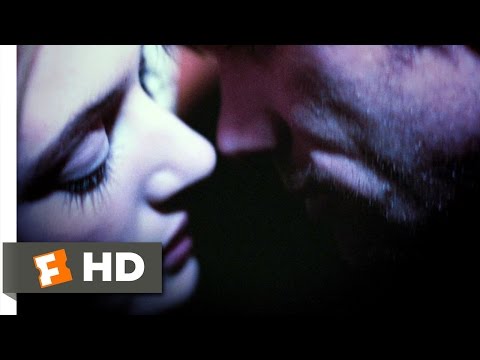
Allow the Dream to Influence Your Characters and Their Arcs
One of the main arguments against many dream sequences is that they have no lasting impact on the characters or the overall story. You can attribute this to the previously mentioned fake-outs of characters dying in a dream and then suddenly waking up.
Take the dream sequence from Aliens as an example.
- Ripley lies in a hospital bed. Suddenly, she feels a horrendous pain in her chest.
- She rips backs her robe and sees an alien trying to push its way out, only for her to wake up in a sweaty mess.
Was it a cheap scare? Is it a screenwriting con? Not necessarily.
Ripley faces nightmares throughout the film as a direct result of the horrors she faced the first time the alien attacked. This is a specific character attribute that influences her character arc from beginning to end. She is haunted by what she experienced and attempts to warn the people she is with about the dangers they are facing.
We constantly see Ripley struggle with nightmares throughout the story. That initial dream sequence gives us a peek into her mind and those nightmares. Therefore, it resonates with us every time she awakens from her sleep, holding her chest.
That is how you create a powerful dream sequence. Not by duping the audience into believing that your character is about to meet their end but by allowing the dreams to influence your character’s actions and story arc far beyond the sequence itself.
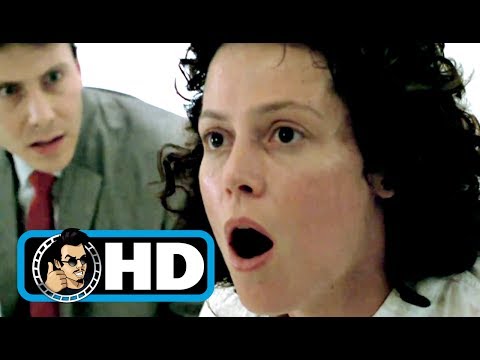
As mentioned, dream sequences need to be more than a page or two of surreal imagery. Dream sequences are scenes and they still need to act like them, helping develop your plot or characters in some way.
So before you start writing your dream sequence, you need to know what you intend to accomplish with the dream and what function it plays for your plot and characters.
- In a ‘realization dream’, something must “click” for your character in the dream. This could be something they have been struggling to figure out throughout your story.
- Perhaps your character’s latent desires, masked by strict conscience in the waking world, are thrown into sharp relief in a vivid dream sequence.
- This particular type features in American Beauty , where the lead character Lester starts having erotic dreams about a young woman covered in rose petals. The scenes accentuate Lester’s attraction and obsession with his daughter’s friend.
- It’s a truly vivid attraction and obsession, one that gives the audience context to what is going on in his mind every time his daughter’s friend appears in his life.
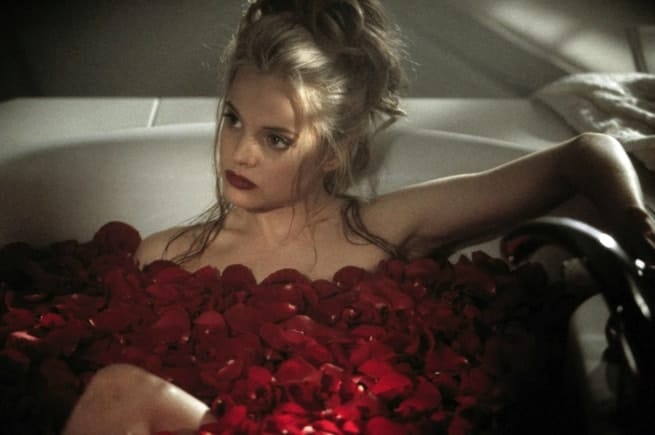
- This sequence shows a character struggling with an impossible choice.
- Using a dream sequence to colourfully illustrate internal turmoil can give a face to a character’s hidden agony and struggle.
- An American Werewolf in London utilizes this type of dream sequence to great effect. Newly bitten werewolf David Kessler hasn’t quite figured out what has happened to him yet. But his dreams help to show the audience the internal battle in his mind.
- When mutant Nazis invade his peaceful home and start to murder his family, it is a sign to the character that dangerous forces have gained control of his mind. Turning into a werewolf is bound to wreak havoc on one’s subconscious and his dreams tell him that he no longer has any control over his life.
- During this sequence, you give your character a possible glimpse of the future events.
- You should use this dream type sparingly and with caution. If your characters can accurately predict the future with consistency, it can drain the tension right out of your story.
- This dream sequence works best if your character has prior knowledge of future events that might influence their character.
- In Terminator 2: Judgement day , Sarah Conor has a nightmare about the upcoming judgement day she was warned about, where America is destroyed by nuclear explosions. The horror of this vision alters her character further and prompts her to take action to stop it from coming true.
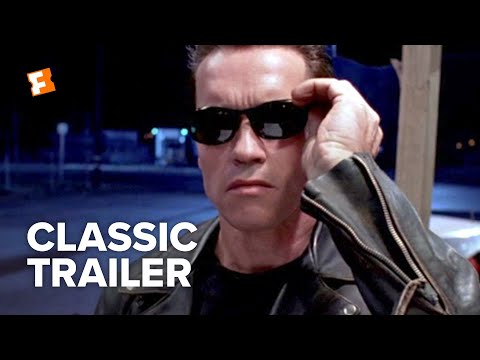
As a general rule of thumb for writing a dream sequence, ask yourself exactly why you’re including it. If you can’t come up with an answer other than, “because it will look awesome,” then the sequence probably isn’t going to serve your plot or your characters and therefore isn’t necessary to your story.
Make the Dream Ask a Question
Just coming up with a foreboding or interesting dream is not enough to keep an audience engaged as you essentially take a break from your story. Therefore, another key to writing powerful dream sequences is that you must frame them as dramatically as possible. This means that the dream sequence should aim to either ask or answer a dramatic question.
The dramatic question has to do with the central conflict involving your protagonist . The most interesting question in all of fiction is why. Why is this dream happening? Why does this dream matter? If you make your dream sequence ask a dramatic question of your protagonist , you’ll almost certainly hook an audience into the rest of your story by making them want the answer.
- Dream sequences are a great place to ask these difficult questions of your protagonist.
- This is because you have the rare opportunity to physically enter your character’s psyche.
- You can introduce opposing elements that could represent their inner conflict.
- Or you could turn the dream into a visual manifestation of the lessons your protagonist needs to learn.
Whatever approach you choose, your story should introduce thematic or character-driven elements that relate to the dramatic question. Then the dream sequence must accentuate these themes and character moments, or vice versa. The sequence should always either be booked-ended by a question being raised or a question being answered and then later applied to your story’s events.
This way, the dream sequence becomes a unique way of introducing the elements of your screenplay. Looking at the example of Black Panther , you will see how its dream sequences aim to answer the dramatic question of the story and how this affects the protagonist during the remainder of the film.
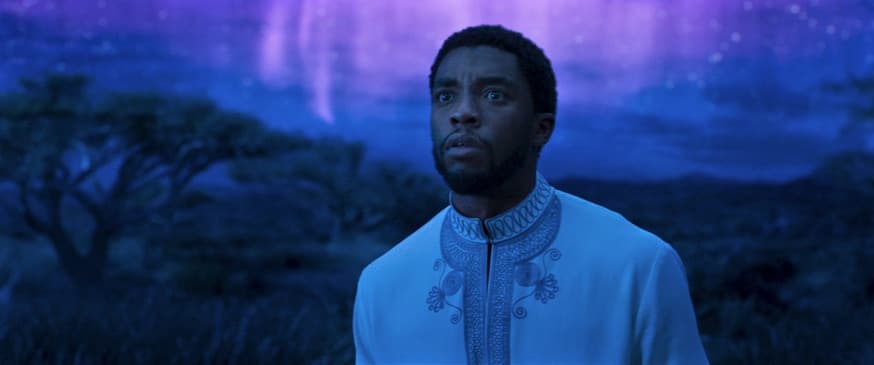
Throughout Black Panther , the protagonist T’Challa faces two separate dream sequences where he enters an ancestral plane to speak with his father’s spirit. The sequences occur towards the beginning and end of the film. Both aim to ask T’Challa the same dramatic question: What kind of king do I want to be?
- As the story begins, T’Challa believes Wakanda should hide away from the world.
- The audience sees in the first dream sequence that T’Challa wants to be a good king like his father and he thinks the best way to do that is to uphold tradition.
- That is the first answer to the dramatic question.
However, through the course of the film, the other characters, mainly the antagonist Erik Killmonger, challenge T’Challa’s beliefs. Erik is a walking reminder of his father’s failings. He’s an example of the people who have needlessly suffered because of Wakanda’s isolationism. He’s living proof that hiding from the world will not keep them safe. Therefore, it is clear that T’Challa’s answer to the dramatic question is wrong.
It is only by T’Challa confronting all of this that his beliefs start to change.
- When the second dream sequence arrives and the same question is put forward, the protagonist has a different answer.
- He declares that he and his father let the fear of Wakanda’s technology stop them from doing what was right and that they were wrong to turn their backs on the rest of the world.
After learning from the antagonist and facing his inner conflict within his dreams, T’Challa finally decides what kind of king he will be.
Dream Sequences as Part of the Story Structure
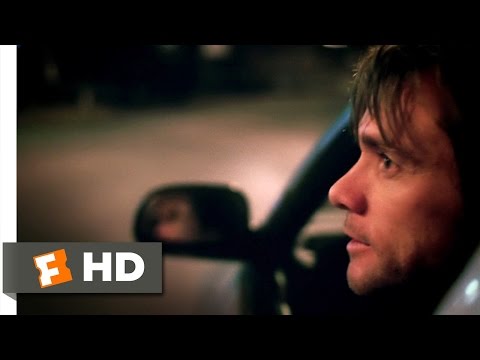
Dream sequences work best when you weave them into the structure of the story. One of the major reasons dream sequences often fail is that they don’t move the immediate plot forward. They simply feel like an annoying add on that the writer has chosen because they have run out of ideas.
However, when dream sequences are married to the structure you use to tell your story, they are no longer a tool; they are a part of the structure as a whole. If you bury the concept of dreams so far into the foundations of your story that they become a part of the fundamental premise, then no one can argue against their inclusion.
In addition, cementing dream sequences into the structure of your screenplay provides you with a fresh and interesting outlook into a particular genre or type of story that no one has ever seen before. This can turn a predictable and overused format into an entirely new concept. Just take the three basic premises from these films as an example and remove any mention of dreams.
- Inception – A group of thieves try to destroy a rich man’s company.
- A Nightmare on Elm Street – A terrifying ghoul with knives for finger kills a bunch of teenagers.
- Eternal Sunshine of the Spotless Mind – A man tries to forget his ex-girlfriend by removing everything that reminds him of her.
Inception sounds like a run of the mill heist film, A Nightmare on Elm Street sounds like just another slasher film and Eternal Sunshine of the Spotless Mind sounds like your everyday romantic drama. However, take the same premises and add the thing that makes them such original films in the first place and you get a completely different story.
- Inception – A group of thieves enter a man’s dreams to try to plant an idea that will destroy his company.
- A Nightmare on Elm Street – A terrifying ghoul with knives for fingers kills a bunch of teenagers within their dreams.
- Eternal Sunshine of the Spotless Mind – A man tries to forget his ex-girlfriend by removing her from his memories, accessed via his dreams.
As you can see, when the dream sequences become part of the structure and therefore your story’s premise what you’re doing is employing a different way of telling a cinematic story.
Just like any other technique in screenwriting , dream sequences can be used as a powerful and unique way to tell your story. They give you the rare opportunity to enter your character’s mind and consequently allow your audience to experience what that character is thinking and feeling.
How you choose to visually render the subconscious is up to you, just be sure to not go completely overboard with the surreal imagery or miss the mark completely and create a dream entirely like reality. Make sure you give your dream sequence a function to your overall plot and characters. The consequences of the sequence should be felt way after the character’s eyes have opened, be it in a change to your character’s arc, an influence on your character’s actions or a differing outlook on the dramatic question of your story.
The best dream sequences aren’t used as a crutch. They’re not used to solve a plot hole or as bad visual exposition . Instead, they’re used as an innovative way to tell your story. The best dream sequences act as a fundamental part of the story and its premise.
- What did you think of this article? Share It , Like It , give it a rating, and let us know your thoughts in the comments box further down…
- Struggling with a script or book? Story analysis is what we do, all day, every day… check out our range of script coverage services for writers & filmmakers.
This article was written by Stephen Harper and edited by IS Staff.
Get *ALL* our FREE Resources
Tackle the trickiest areas of screenwriting with our exclusive eBooks. Get all our FREE resources when you join 60,000 filmmakers on our mailing list!
Success! Thanks for signing up, now please check all your email folders incl junk mail!
Something went wrong.
We respect your privacy and take protecting it seriously
2 thoughts on “Dream Sequences: How to Craft Them While Avoiding Common Pitfalls”
AWESOME!!!! Informative. I thought I could just “plop” a dream piece into my story – NOT. THANK YOU for the enlightenment. Kellie
Thanks Kellie!
Leave a Comment Cancel reply
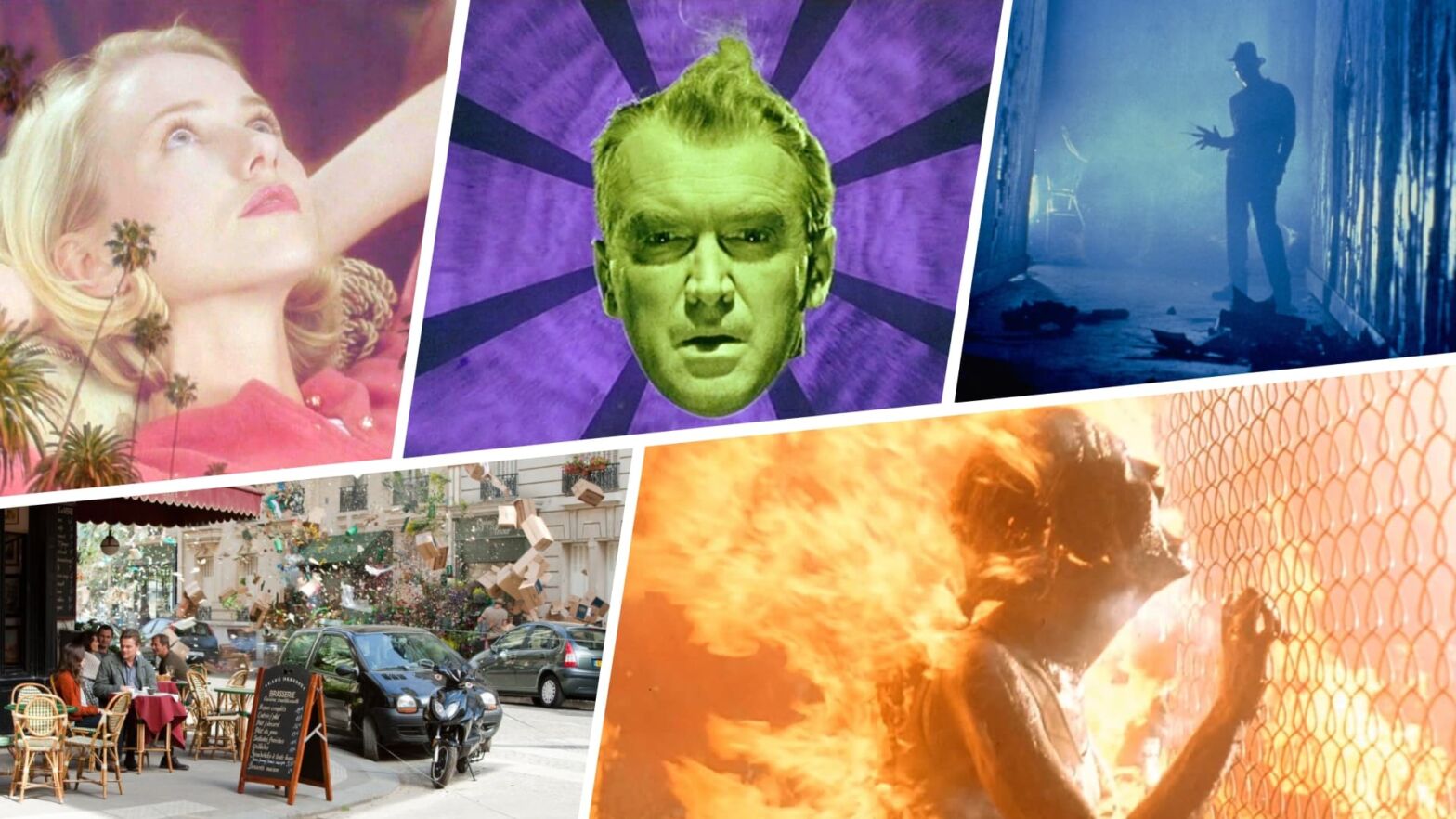
- Scriptwriting
How to Write Dream Sequences in Film — Format & Story Tips
I t is not uncommon for writers to find inspiration from their dreams. Dreams are a canvas of the subconscious that humans have innately interpreted throughout history. This allure to deciphering dreams has made them an incredible storytelling mechanism. Many screenwriters utilize dream sequences for their strong imagery and effective storytelling abilities. In this article, we’ll analyze how to write dream sequences in film and the do’s and don’t of the craft.
Watch: Anatomy of a Screenplay — Ultimate Guide
How to write dream sequences in film
Define the purpose of the dream.
The very first step in learning how to write dream sequences in film is to ensure that the dream sequence you are writing has a purpose. Whether it is thematic , plot-driven, or character-driven, a dream sequence should serve the story just like every other scene. Here are a few ways your dream sequence and function for the story of your screenplay.
Advance the plot
While they may not be rooted in reality, dreams can be a part of cause and effect sequences. Specifically, a character’s actions may be prompted because of a dream they have.
Take this scene from Terminator 2: Judgement Day for example. Sarah Connor has a horrible nightmare in which a nuclear explosion wipes out everyone around her.
Example of a dream sequence • Terminator 2
This dream prompts her to try and prevent this event from happening. Not only can these dreams be a tool for foreshadowing , they prompt actions in characters. Because this dream is a part of a cause and effect sequence, it effectively advances the plot and moves the story forward.
Another way dream sequences advance a plot is by incorporating them into the structure of your screenplay. Dream sequences literally become plot points that move a story forward.
Illustrate a character’s desires
Dreams in films tend to reflect the psyche of a character. Therefore, they often reflect what a character wants. Dreams that show characters achieving or obtaining what they desire perfectly show the audience very clearly what their internal or emotional goal is.
In this scene from Dumb and Dumber , Lloyd’s day dream wanders off as he thinks about the best case scenario when finally meeting Mary.
Dumb and Dumber • Example of a dream sequence
The dream is a hilarious moment that also informs the audience on Lloyd's desires as well as expectations. This effectively raises the stakes for when Lloyd finally meets Mary.
Portray internal conflict
Some dreams, however, don’t portray future events in the best case scenario. Some dreams reflect a character’s fears as well. These dream sequences effectively illustrate a character’s internal conflict as they weigh the possible outcomes of their decision, both good and bad.
A great example of this type of dream sequence can be found in Superbad . When Seth walks into a grocery store to try and buy liquor as an underage teenager, his mind wanders as he weighs the possible outcomes.
Superbad • Example of a dream sequence
While these dream scenarios are hilarious, they all capture Seth’s fears and internal conflict in buying the booze. Rather than seeing him walk in, look around and walk out, we get a glimpse at what he is thinking that led to his final decision.
Remember, these are only a few ways to define the purpose of your dream sequence. Whatever the purpose of your dream sequence may be, make sure you can define the specific way it serves the story of the film.
Related Posts
- How to Write ‘Realistic’ Dialogue →
- Inception Ending Explained — Dream vs Reality →
- The Difference Between Internal and External Conflict →
How to write dream sequences in film
Determine the logic of the dream.
After defining the purpose of your dream sequence, it’s time to determine the rules it plays by. Dreams, as they occur in our own lives, can be either uber realistic or incredibly far-fetched.
Dreams in a film can also behave in either way.
It’s important to determine what type of dream your sequence will be. What logic is the dream founded in. Is it so realistic that the character and/or the audience thinks it is reality? Or is the dream so surrealistic that it draws attention to the fact that it is a dream?
Surrealistic
The surrealistic dream is so illogical that it makes the audience aware of the dream state of the sequence. This can be used to create intriguing imagery that portrays a character’s subconscious.
This dream sequence in Scott Pilgrim vs. the World increases the levels of surrealism through a seamless transition from reality to a dream state. We brought the Scott Pilgrim vs. the World screenplay into the StudioBinder screenwriting app to take a better look at how it was written.
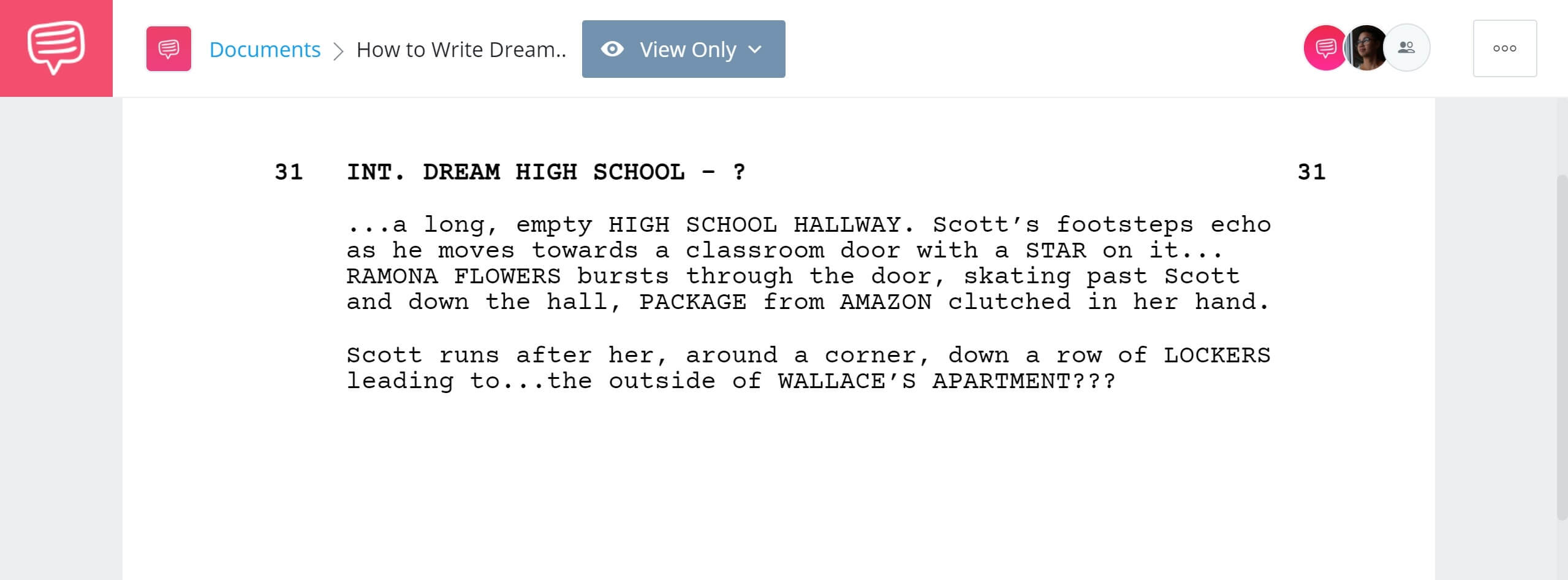
Scott Pilgrim VS. the World • Script dream sequence
Notice how the slug line even says “DREAM HIGH SCHOOL” drawing attention to the obvious dream state. The final cut of this scene even uses sound design and production design to further elevate the surrealism of the dream sequence.
Scott Pilgrim VS. the World • Zelda Fairy Fountain Dream Sequence
On the other side of the dream sequence is the realistic dream. These dreams play by the same logic as reality and can therefore be mistaken as reality. Realistic dreams can be tricky because you don’t want to outright mislead the audience for the sake of a twist (more on this later).
But realistic dreams that appear to be reality can be an important thematic point or plot point that plays into the story. Few examples of this effect are better than the final scene in Inception , one Christopher Nolan’s best films .
The entire plot and structure of Inception is based on dreams and many of them tend to veer toward surrealism. However, the final scene of the film utilizes the “realistic “ dream so well that many still argue whether the final scene was a dream at all. We reviewed the various interpretations of Inception's dream vs. reality debate in another post. (Spoilers ahead)
Inception • Ending Scene Full
Walking the line of misleading the audience versus intrigue the audience can be difficult. But as Nolan shows, the payoff can be incredible. We brought the Inception script into the StudioBinder screenwriting app to analyze how Nolan introduces the dream world to a story’s characters as well as the audience. In fact, Nolan does it in the very first scene.
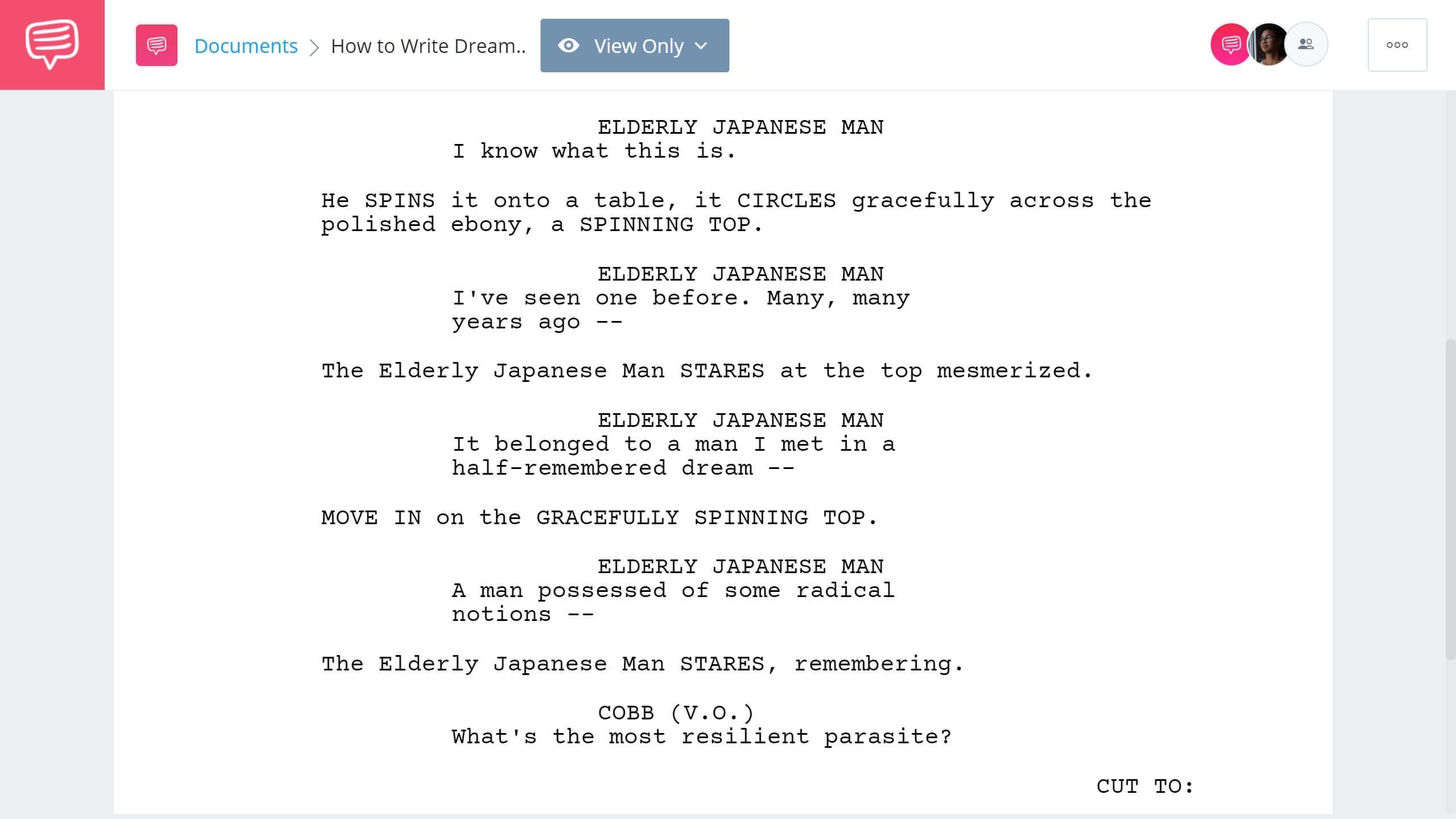
Inception • Ending Scene Full
Planting the idea (no pun intended) of dreams is critical in the beginning of the film as the plot unfolds.
Because dream sequences are a matter of walking a narrative line, it’s also important to talk about the things to avoid when writing a dream sequence.
Avoid the flashback dream
Exposition can communicate key information for audiences to latch onto and invest in a story. Executing exposition is one of the toughest things to do as a screenwriter. All too often, screenwriters utilize the flashback dream sequence to lay out exposition.
The problem with this technique is that it is rarely done well. Flashback dreams that serve as exposition are often on the nose and work as a crutch.
In other words, using dreams for exposition is often considered a lazy way to communicate to the audience.
If you’re looking for better ways to lay out exposition in your screenplay other than the dream sequence, check out this video by Thomas Flight. The video is a supercut of exposition done properly. Note how none are a dream sequence.
Script dream sequence • In Praise of Exposition
If you’re wondering whether or not your dream sequence is too on the nose as exposition, ask yourself “Is this the only purpose the dream serves?” If it is, try to find another way to lay out your exposition.
- Download the Screenplay for Inception →
- What is a Flashback? Definition and Examples →
- How to Conquer Writing Exposition in a Screenplay →
Dreams shouldn’t mislead the audience
An overarching mistake screenwriters make when writing dream sequences is intentionally misleading the audience. This is often done to raise the stakes of a story. While this may help get you to an exciting climax, it also leads to a lackluster ending.
Misleading dream sequences can get more and more consequential to get the audience more invested. But when the climax happens and these stakes are revealed to be grounded in a dream, audiences may have enjoyed the ride but they will hate how it ends.
An example of this can be seen at the end of Click (spoilers ahead). At the climax of the film, Michael finally faces the consequences of fast forwarding through everything he hates in life. However these consequences are merely wiped away when we find out they all occurred in a dream.
How to Write Dream Sequences in Film • Click Ending
Sure the film tries to tie the knot by saying it was really the Angel of Death that gave Michael another shot. The damage, however, is done. That emotional climax becomes less memorable when the audience realizes it wasn’t real.
These misleading dreams are usually intended to fake out the audience into a more exciting climax. Ultimately, it leads to a subpar ending that leaves an audience feeling misled.
Human beings are naturally drawn to interpreting dreams, even if they belong to characters in a story. Using this to your advantage as a storyteller is a great idea. Executing this idea, however, can be tough. Hopefully this article has informed you on how to write a clever, story-based dream sequence that may end up being the most memorable scene in your screenplay.
Dream sequence screenplay format
Once you’ve decided on the content of the dream sequence and dialed in on how it will contribute to your story, it’s time to put it into the screenplay. Let’s take a look at the Superbad screenplay of the scene we mentioned earlier.
As we look at the script in the StudioBinder screenwriting app , we can see how Seth Rogen and Evan Goldberg formatted different dream sequences with slug lines . Within the script, it may be important to tell the reader that the scene that is about to occur is out of the context of reality. Goldberg and Rogen add “Fantasy” in the slug line of each dream sequence to make this clear.
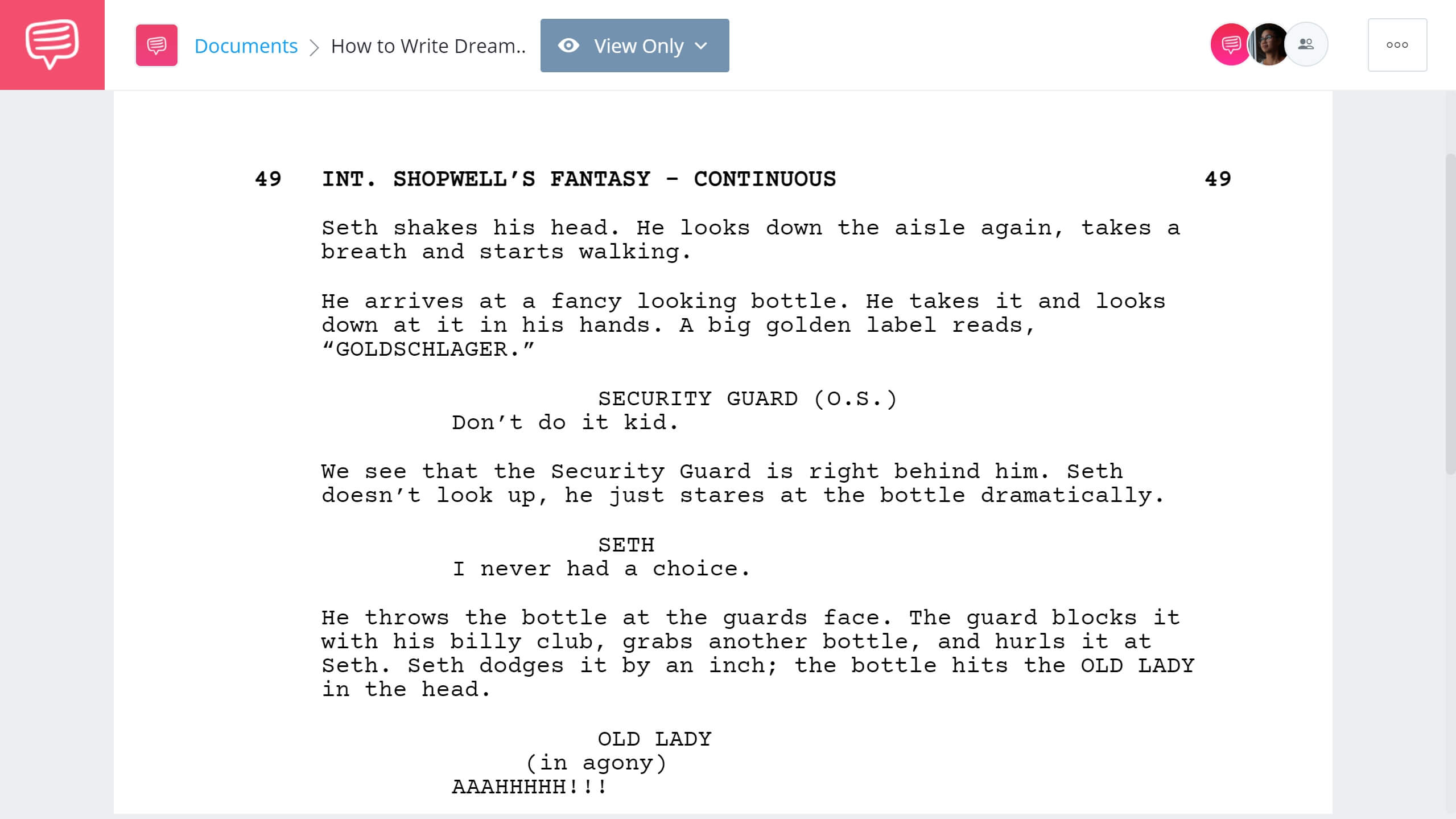
Dream sequence screenplay format • Superbad
Learning how to write slug lines will give you the tools needed to bring your dream sequences to life. When it comes to screenplay formatting , remember, your script should create a visual of what the cinematic story will look like. However, it also needs to give clear context of a scene to the reader especially when writing dream sequences.
Dream sequences have created some of the most memorable scenes in cinema. However, they have also resulted in some of the worst scenes in cinema. Following these tips on how to write a dream sequence in a screenplay will guide you in the right direction of hopefully writing the former.
How to write a montage
Writing a dream sequence in your next project? The montage might just be the ideal format, especially when dreams can jump between time and space so easily. Therefore, let's learn how to write a montage, including some pro-tips on formatting, spacing, and clarity.
Up Next: Writing a montage →
Write and produce your scripts all in one place..
Write and collaborate on your scripts FREE . Create script breakdowns, sides, schedules, storyboards, call sheets and more.
Leave a comment
Your email address will not be published. Required fields are marked *
- Pricing & Plans
- Product Updates
- Featured On
- StudioBinder Partners
- Ultimate Guide to Call Sheets
- How to Break Down a Script (with FREE Script Breakdown Sheet)
- The Only Shot List Template You Need — with Free Download
- Managing Your Film Budget Cashflow & PO Log (Free Template)
- A Better Film Crew List Template Booking Sheet
- Best Storyboard Softwares (with free Storyboard Templates)
- Movie Magic Scheduling
- Gorilla Software
- Storyboard That
A visual medium requires visual methods. Master the art of visual storytelling with our FREE video series on directing and filmmaking techniques.
We’re in a golden age of TV writing and development. More and more people are flocking to the small screen to find daily entertainment. So how can you break put from the pack and get your idea onto the small screen? We’re here to help.
- Making It: From Pre-Production to Screen
- What is a Femme Fatale — Definition, Characteristics, Examples
- What is Method Acting — 3 Different Types Explained
- How to Make a Mood Board — A Step-by-Step Guide
- What is a Mood Board — Definition, Examples & How They Work
- How to Make a Better Shooting Schedule with a Stripboard
- 0 Pinterest
- The Writer’s Field Guide to the Craft of Fiction
- How to Find a Premise for a Story
- How to Develop a Premise into a Story
- How to Describe Setting
- How to Create and Develop Characters
- How to Write a Scene
- How to Structure a Story
- How to Move Through Time and Space
- How to Write (Or Write Around) Plot
- How to Raise the Stakes
- How to Build Suspense
- How to Write Dialogue
- How to Write with Style
- Interviews with Writers

How to Write a Dream Sequence

Paul Yoon’s novel, Snow Hunters , follows the travels of Yohan, a man who leaves his country after the Korean War to start over in Brazil. The novel prompted a New York Times reviewer to write, “One of the gratifications of literature is to know a character in a book more completely than we can know people in real life.”
Some writing teachers make a rule for stories submitted in workshop: No dreams. No dream sequences. They make this rule because badly written dreams are all the same. They “show” a character’s inner torments/thoughts rather than artfully imbedding them into the narrative. But if fiction is, in any way, supposed to imitate life, then dreams are fair game. The question is how to write them well.
Paul Yoon has written one of the best dream sequences I’ve ever read in his new novel Snow Hunters . You can read the first chapter here . The dream begins at the bottom of page 16.
How the Story Works
The passage begin with Yohan falling asleep and hearing sounds through the open window:
“the tapping of the rain and voices and a car and then a ship’s horn. A single chime of a church bell. a door opening. A song on the radio. The steady punches of a sewing machine. He heard aircraft and the dust spraying from trucks and the wind against the tents”
We get a short reflection on this noise from Yohan (“it was faint and calm and he did not mind”), and then the dream begins.
“He was riding a bicycle. He felt a hand on the small of his back. Someone familiar spoke to him and he said, —I can go a little longer, and he lifted a shovel and sank it into the earth. A group of children whistled and clapped. And then he was running his hands through a girl’s hair and she took his wrist and they moved through a corridor where rows of dresses hung from the ceiling. Those dresses turned into the sea.”
Then the dream ends. So why does this dream work? First, it has no clear message. It’s not telegraphing crucial information about Yohan’s interior life. At best, the message is mixed: the desire and need to push himself and the desire for friendship and love. The images are not accidental. They reflect encounters and experiences from waking life. Second, the dream does not predict the future. It doesn’t attempt to move the plot forward. Though dreams sometimes cause us to act (dreaming that someone has an accident and then, upon waking, contacting that person), we tend to be skeptical of someone who claims that valuable information was gained in a dream.
So why does the dream work? Here are four reasons (and lessons to keep in mind):
- It’s so beautifully and simply written.
- It glides from image to image, never dwelling too long in one place.
- It’s short.
- The images reflect things we’ve already seen in the novel. The dream feels to us, the readers, the same as it does to Yohan. In other words, the dream feels like a real dream. And that is rare in fiction.
The Writing Exercise
Let’s practice writing a dream sequence, using Paul Yoon’s Snow Hunters as a model:
- Choose a character whom you’ve already created and written about.
- Bring the character home, to bed, after a long day—not after a life-changing event but simply a day in which things seem to be on the cusp of happening.
- When the characters’ eyes are closed, let the sounds of the world drift in. Be specific and precise. You’re describing that odd state in which the mind is both idle and resting and also alert and aware of its surroundings.
- Ease into the dream. If you’ve ever heard the voice/sound from the waking world in your dream (a spouse or child talking to you, a professor speaking, the alarm clock), then you know how permeable dreams can be.
- Make the dream a reflection of the images of the waking world. Treat the dream’s reflective power like that of an almost-still lake. Remember, the mind is not directing traffic any longer but instead letting images trickle through unfiltered. Move from image to image. End on one that best seems to fit the mood of the day.
Now you have a dream sequence. If it seems inconsequential, that’s good. Beware dreams of great import—unless you’re writing about the Virgin Mary. Let the dream become part of the character’s fabric and, thus, the fabric of the novel.
Good luck and have fun.
Share this:
Tags: character development , creative writing prompts , how to write a novel , Paul Yoon , Simon and Schuster , Snow Hunters , The Korean War , writing dream sequences , writing dreams , writing exercises , Young Lions
- Comments 31 Comments
- Categories Character Development , Descriptive Language , Setting and Place
31 Responses to “How to Write a Dream Sequence”
Great advice! Dreams are such a tricky thing to write. I love the example you’ve put up. Thanks for this!
Thanks so much.
Reblogged this on Creative Writing School .
Aaaaaah how nice. I was just trying to write a dream sequence into my story (in Dutch, since I’m like yeah from Holland) and Google brought me here. Great website. I was so glad to find that my projected sequence has a lot of similarities to your excellent exemple. But i stil have one question though: if your entire story use active present tense, I what tense would the dream play out?
Good question, Ron. I’d guess that the dream would play out in present tense. In Snow Hunters, Paul Yoon writes both the novel as a whole and the dream sequence in past tense. But there is a marked transition into the dream state, and it comes through a series of images that exist outside of time and tense: “A single chime of a church bell. A door opening. A song on the radio. The steady punches of a sewing machine.” Perhaps something similar would work in your story. Good luck!
Wow Michael, thanks for your quick reply. A transition is a clever trick. 🙂 But what if your story starts with a dream? I just wrote it and used present tense. Felt a bit awkward at first, because I thought that no one could ever do a live coverage of a dream. Your to busy dreaming the dream. But then I realised, this is only the case when you’re writing in first person and I’m not. So I just traveled out my main character’s head and wrote about the dream he was/is having. Haha, I’m getting confused again.
I think it was probably a smart decision to travel out of your character’s head to describe the dream. As for the tense, there’s no penalty for trying out another tense and seeing which one works best. You might also try making the dream as short as possible. Usually–but not always–dreams are not as interesting as the reactions that characters have to them. So, if you have a dream that makes you leave your spouse and kids and join the crew of a whaling ship, then that was a pretty interesting dream.
Hi Michael, I am 15 years old (turning 16 in 4 months time). I am currently trying to write a book by having a past dream and going into the future by the character waking up from the “past dream nightmare” but I don’t know how to do the past dream in 1st person. My opening dream starts off in a fictional world and then an unknown force takes over the planet but my main character gets rescued by some people who look after her and from then on she wakes up in a space ship and describes her mission and what she has to do but yeah I was wandering how you can describe a dream in first person past tense sort of thing you know? and transitioning to the present. Please can you give me an example as well as that would really help. Im sorry if all this text is all over the place but I hope you can understand what im saying. Thank you for taking your time to read my comment.
Thanks for this! I’m attempting a dream sequence in Chapter 2 of my novel I’m writing on my blog, so check back tomorrow if you want to see the fruits of my labour. 🙂
Thanks, Peter. Hope it goes well!
Brilliant! I’m so glad I did a quick search on writing dream sequences to find this, it helps so much for what I’m trying to do!
If you have some dream and you want to write about that then don’t think so much just do it. Love your post very nice it was. http://www.imantra.org/terms.php
Reblogged this on The Creative Kitty .
So right now i have an assignment in science to write about the arctic tundra and i chose to write it in a journal form, the main character (Evalynne) has a nightmare and i cant figure out how to write it. I want it to have something to do with her 8 year old sister (Gwenie) and her 10 year old brother (Theren) plz reply asap and thx
“Evalynne” your sister called. “Evalynne!’ you heard again and again. “Yes Gwenie.” you replied. Your sister’s voice sounded as if it was right in front of you but all you saw was an old house.
thats what i have right now but i dont like that part of my story. if it would help i can also post the rest of the story for some context. 🙂
Hmm, Riley. Intriguing assignment. The post above includes an exercise for writing a dream sequence. Perhaps it will help.
What if the character is dead and she’s looking back on her life in a dream sort of way?
I know my comment seems kind of late. But, I am really thankful I managed to land in this blog. I am currently writing a story in Wattpad. Somehow, I’m stuck with a bad case of Writer’s Block. I am trying to write a dream scene of a man who lost his memory. I wanted him to dream about his past conversations with his girlfriend. I’m not sure if i have to write so vaguely like what a dream should really be. Or, maybe if i should write the whole conversation clearly like a real scene in a waking life.
I’m thinking…..if the character has lost their memory would it be more interesting to have bits and pieces of conversations zinging through his view of the dream? Bits of conversations with greater significance that can be redressed in more of his dreams until the bits and pieces converge to become mostly whole conversations that eventually surface during his times being awake. He might hear someone having a conversation and connects with something said that resembles the dream sequence bits and pieces jogging his memory of past realities. I’m Rosalie. I got excited and created a run-on conversation. I hope your story turns out great!
I love it so much
Thank you, well written. Your example from Paul Yoon’s Snow Hunters was clear, to the point, and beautiful like poetry. I understand now.
I am writing a short story for a college creative writing course. I want to start the story with a dream sequence. Any ideas about how to start???
The playful momentum makes this writing exercise seem to be one to be accomplished with ease….what fun it is going to be. Thank you very much….Rosalie
Hi Michael – How does a “vision” sequence differ from a dream sequence? My college-age protagonist begins having visions as if she’s seeing memories/experiences through someone else’s eyes. Someone very significant (but she doesn’t discover this until much later in the story). These episodes hit her unexpectedly and have a dream like quality but she’s wide awake going about her day. Her reaction is vital to the story plot as it propels her on a quest for information about her past. Is the approach to writing a vision similar to writing a dream? How do you think they differ?
Sounds like they’re a little different, Dana. When a dream ends and a character wakes up, it negates everything that we learned in the dream (unless the dream can predict the future). But if the vision is a sight of something that is real or that will be, then it carries story weight.
Thank you, Michael. The visions do carry story weight but the protagonist doesn’t initially understand what is happening or what the visions mean. I want the reader to experience them alongside the protagonist. I used a modified version of your exercise (my protagonist isn’t sleep walking through the university library) as a guide to write a first draft. The sights and sounds drift in as they would before a dream and then the vision happens. I kept writing short and simple but sensory-rich. Her reaction brings her back to the present moment. Thanks again.
Like 👍 Good😃
Trackbacks/Pingbacks
[…] Write a short and fresh dream sequence that shows us something. https://readtowritestories.com/2013/08/20/how-to-write-a-dream-sequence/ […]
[…] How to Write a Dream Sequence […]
Leave a comment Cancel reply
One of poets & writers’ “best books for writers”.

THE WRITER’S FIELD GUIDE FOR THE CRAFT OF FICTION features all-new essays and exercises built around one-page excerpts from recent bestsellers and award-winners from different genres.
Follow via Email
Enter your email address to follow Read to Write Stories and receive notifications of new posts by email.
Email Address:
Read to Write Stories
Michael Noll’s collection BULLHEADS named a finalist for the 2018 Flannery O’Connor Award for Short Fiction
Check out the official announcement here !

Read Michael's story "Foreign Exchange" in the latest issue of Crazyhorse.

Want to read Michael's fiction? Find it in The Best American Mystery Stories 2016.
- Already have a WordPress.com account? Log in now.
- Subscribe Subscribed
- Copy shortlink
- Report this content
- View post in Reader
- Manage subscriptions
- Collapse this bar
Novlr is now writer-owned! Join us and shape the future of creative writing.
How To Write A Dream Sequence

Dream sequences allow writers to tap into the mysterious and sometimes bizarre world of dreams, exploring the subconscious and integrating symbolism and metaphor into their storytelling.
Dreams can reveal a character’s deepest fears, desires, and motivations in ways that may not be immediately obvious in the waking world. To write a dream sequence can be challenging, but it’s also an opportunity to let your imagination run wild, bringing your characters and stories to life in powerful and unforgettable ways.
What makes a good dream sequence?
Dream sequences should mimic actual dreams: chaotic, disorienting, yet meaningful. Readers should experience the same confusion and vividness they would in their own dreams.
A good dream sequence should give insight into a character’s inner world while also advancing the story. To achieve this, it’s important to strike a balance between the logical structure of the narrative and the illogical nature of dreams.
- Vivid imagery : Dreams are often hyper-real, so the more vivid your descriptions, the more captivating and immersive the dream becomes.
- Sensory details : In dreams, senses are often heightened, and evoking the senses can both enhance and subvert expectations
- Symbolism : Everything has meaning in dreams. Dream sequences use symbols to foreshadow, hint, and reinforce.
- Emotion : Using emotion in dream sequences allows characters to explore their heightened state, and expose their feelings on events.
- Confusion : Dreams can be illogical and disjointed. By disorienting both your characters and readers, you can explore new narrative avenues.
- Representation of desires or fears : Dreams often reflect our subconscious thoughts and emotions, and the images and events in the dream can reveal important information about the character’s inner world.

Write more, write better, and achieve your goals with Novlr!
Types of dream sequences.
There are several different types of dream sequences that you can use in your writing. Each type serves a different purpose and can be used to convey different information about your characters and their inner worlds.
- Foreshadowing : Dreams that set up or hint at future events in the narrative.
- Nightmares : Dreams that evoke fear or anxiety in the dreamer and can reveal their deepest fears.
- Lucid dreams : Dreams where the dreamer is aware that they are dreaming and can control what happens.
- Fantasy dreams : Dreams that involve fantastical elements, such as talking animals or magical powers.
- Recurring dreams : Dreams that happen over and over again and may represent unresolved issues in the dreamer’s life.
- Realisation dreams : Where something “clicks” for a character that they couldn’t figure out while awake.
- Internal conflict : Dreams that give a colourful illustration of a character’s inner turmoil, letting the writer show, not tell.
- Linked dreams : Dreams that allow two characters to communicate while asleep through a shared connection.
Quick tips to write a dream sequence
Dream sequences can add a unique and captivating element to any story, but they can be difficult to write. To ensure that your dream sequences are engaging, there are three things to keep in mind.
Firstly, apply logic , but remember that the dream needs to function as a scene and needs some sort of narrative.
Secondly, use narrative distance to create a floaty, dreamlike feel that makes your readers feel they’re dreaming too.
Finally, use detail to create a certain atmosphere, either vague and eerie or overcrowded and stressful. Take care not to overdo it and make your readers uneasy to the point of wanting to walk away.
Ready to achieve your writing goals? Join Novlr today.
The Write Edit
Premier Editing Services
Writing Dream Sequences
December 13, 2016 By The Write Edit 6 Comments
When you anticipate an upcoming dream scene, how do you feel? Do you look forward to it or skim it and discount its importance? What about when you’re gripped by a confrontation between lovers only to find out it was a dream?
As an editor, when I hit a dream sequence, I carefully note whether it works. Usually it doesn’t. And I feel particularly disappointed and cheated when I’m not told that a dream is coming. I might be reading about the antagonist crashing a wedding ceremony in an effort to kidnap the bride, only to find out he was dreaming this scenario. It’s like that author is saying, “Ha ha, gotcha.”
Dream sequences often interrupt the flow, delay the story, and bore the reader, even if well written, because the reader is aware that this is only in the character’s subconscious. And if for no other reason, agents and editors usually wince at dream sequences, especially when they open the story. They simply delay the action, the hook, and setting.
Writers sometimes use dreams to show off their flowery prose or their creative imagination … and readers see right through this. Writers would be better off writing the best prose they can rather than looking for ways to impress the reader. Before penning a dream sequence, ask yourself: Does this move the story along, and is it the best method for doing so? Is this dream necessary?
Here are a few scenarios where dream sequences could work:
The character is so stubborn, frightened, or immobilized that it is nearly impossible to act (as in Hamlet’s crippling inability to kill Claudius) that only a dream will prompt him to do so.
Dreams work when they are an important part of the story. For example, in A Nightmare on Elm Street , Freddie Krueger haunts his victims in their dreams, so even though we know what’s coming, dream sequences are essential to the plot, and are the only way to even encounter the boogieman. And of course this is a film, not a book, which relies on visuals.
Dreams can work well in non-fiction, especially if the book centers on the study of dreams or the inclusion of dreams. For example, a psychologist might write a book about the Freudian interpretations of dreams.
Dreams can work in fiction for the same reason. For example, Stephen Lawhead’s sci-fi novel “The Dream Thief” contains dream sequences, and they are expected in a story like this. Books that explore drug use, fantasy, or otherworldy landscapes can also appropriately contain dream sequences.
Children’s stories can work beautifully with dream sequences, as long as they are necessary and well-written. “Alice in Wonderland” is a prime example.
If you want your character to have a dream, it works better to simply say, “Mrs. Parsons dreamt of her high school sweetheart, Roland. Guilt stabbed her as she awoke to fresh coffee and blueberry pancakes her husband had made for her.” It’s not necessary to detail the dream; it is enough to know that her subconscious gnawed at her. And in cases like this, it is okay to talk about the fact that a character had a dream. In fact, it can add nuance to a story.
So, sleep on it, and let me know your thoughts …
Linda Rey says
December 14, 2016 at 4:53 pm
Thank goodness my copy editor let me keep mine at the beginning of my story! (Great article, btw.)
~ Linda Rey, author of Dead Again: Dark Dreams
The Write Edit says
December 14, 2016 at 6:05 pm
I am familiar with your book, Linda, and yours is an exception because the story centers around those dreams. And it is a sterling read, by the way!
January 2, 2017 at 3:32 am
What about using dreams as a way to show the character’s inner conflict or ambivalence of which he may not be consciously aware?
January 15, 2017 at 2:21 pm
That’s an interesting idea, and my answer is this: If using a dream is the ideal way to portray this, then do it. But ask yourself if you are using a dream because it’s the easier way to show the character’s inner conflict or ambivalence. If yes, try using your skill as a writer to illustrate it through scene, dialogue, and narration.
provotorov says
April 4, 2018 at 4:23 pm
The gorgeous dream sequence that opens “ 8 ? ” reveals its unreality in gradual drips, through careful editing. The scene from the 1963 Federico Fellini film fuses sound sparingly over a series of shots where the camera moves horizontally. It’s easy to miss the signs that what we’re watching isn’t real, like the way the camera freezes on close-ups of faces. But once the man is flying, the audience is certain they are not watching a scene set in the real world.
April 20, 2018 at 6:06 pm
I think Fellini’s 8½ is an exception, and there are many. It’s also film, not a book, which can get away with dream sequences a lot more easily. Great example. Thanks!
Leave a Reply Cancel reply
Your email address will not be published. Required fields are marked *
Save my name, email, and website in this browser for the next time I comment.
- Bookfox Academy (All Courses)
- Write Your Best Novel
- How to Write a Splendid Sentence
- Two Weeks to Your Best Children’s Book
- Revision Genius
- The Ultimate Guide to Writing Dialogue
- Your First Bestseller
- Master Your Writing Habits
- Writing Techniques to Transform Your Fiction
- Triangle Method of Character Development
- Children’s Book Editing
- Copy Editing
- Novel Editing
- Short Story Editing
- General Books
- Children’s Books
8 Ways to Write a Dream Sequence
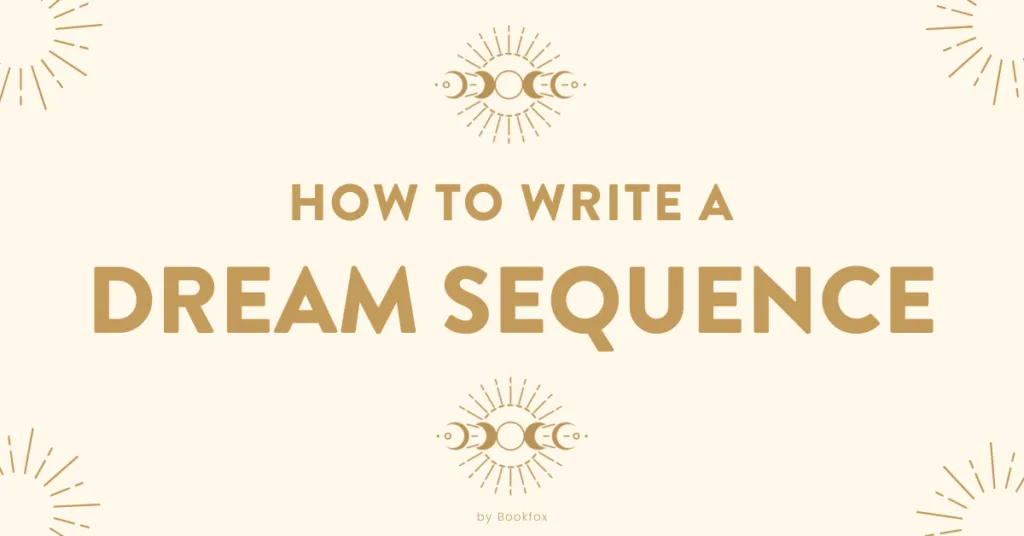
It’s easy to hate dream sequences in a novel.
I mean, how many bad dreams sequences have you read? I’ve read a ton, and that’s why for so long I was resistant to teach other writers how to use dreams, and refused to use them in my fiction.
But after continuing to see dreams in the books of authors I admire , I’ve come around. Yes, dreams do have a place in fiction.
But you have to be very careful about how you use them. Please don’t flub it up.
Before we get to the seven ways to use dreams well, let’s look at the three worst ways to use dreams :
- As a Gotcha Moment . This is a dream sequence that usually happens at the beginning of a book. And it’s designed to trick the reader into thinking they are reading an actual event in the world. But it comes off as a cheap trick when you pull back the curtain and say: “fooled you!”
- Too On The Nose . Sometimes a dream doesn’t feel dreamlike. It feels more like the author wanted to tell the reader something, and crafted the exact dream that would forward the plot. To avoid a dream being too on the nose, use metaphors. Instead of your character having a fear dream about a rapist, have them dream about a snake in their bed (look at the Dostoevsky example below)
- A Sloppy Substitute . Sometimes I read dreams in unpublished fiction and I think: why didn’t the author simply have this actually happen in the book? I mean, if the dream is necessary for the plot, it’s often more dramatic to have it actually happen. If you can make a dream real, please make it real.
Okay, so if you think you’re on track to avoid those mistakes, let’s look at good dreaming examples.
Here are seven ways to write a dream in your novel.
1. Dreams Creating Mystery
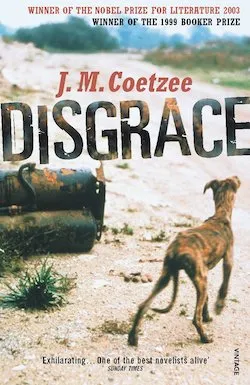
J.M. Coetzee’s book “Disgrace” is the best known of his books, but this dream is taken from “Waiting for the Barbarians”, which is similar in tone and theme.
Here we have a dream creating a mystery. There is a mysterious figure wearing a hood, and whose face cannot be seen, and finally the face is blank.
So who is this figure? Who is this beggar child figure who he offers a coin? There’s a very good connection to one of the main characters in the novel, but in the realm of the dream, it’s a mystery.
“In the night the dream comes back. I am trudging across the snow of an endless plan towards a group of tiny figures playing around a snowcastle. As I approach the children sidle away or melt into the air. Only one figure remains, a hooded child sitting with its back to me. I circle around the child, who continues to pat snow on the sides of the castle, till I can peer under the hood. The face I see is blank, featureless; it is the face of an embryo or a tiny whale; it is not a face at all but another part of the human body that bulges under the skin; it is white, it is the snow itself. Between numb fingers I hold out a coin.”
Rather than using a dream to solve a problem in your book, it’s an excellent idea to use a dream to create a mystery.
2. Dreams Revealing Desires
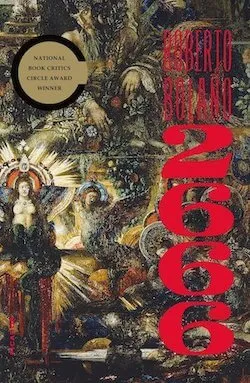
There are more dreams in Roberto Bolano’s “2666,” than any other book I’ve ever read. In fact, the number of dreams in this book actually convinced me that perhaps dreams do serve a useful function in fiction (before, I’d read a lot of bad dream sequences and felt prejudiced against them).
Here, the main character has been chasing the elusive literary figure Archimboldi for decades of her life.
And to heighten that desire/passion, Bolano shows her even dreaming about Archimboldi. If you want to show that your character truly wants something, simply have them dream of what they want.
“When she fell asleep at last, with the TV on, she dreamed of Archimboldi. She saw him sitting on a huge volcanic slab, dressed in rags and with an ax in one hand, looking at her sadly.”
In this dream, her desire is coming true: she finally sees this mysterious, elusive figure, and he’s looking at her.
3. Dreams as a Choice
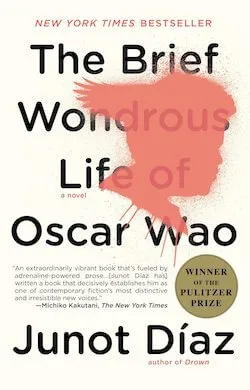
The great thing about dreams in fiction is that you can have them be purely in dreamworld , or overlap with the real world.
In Junot Diaz’s “The Brief Wondrous Life of Oscar Wao,” we see a character who is beaten so badly that he is on the verge of death. And he has a dream (kind of a hallucination) where he imagines a mongoose has given him a choice: to live or to die.
Oscar remembers having a dream where a mongoose was chatting with him. Except the mongoose was the Mongoose. What will it be, muchacho? it demanded. More or less? And for a moment he almost said less. So tired, and so much pain – Less! Less! Less! – but then in the back of his head he remembered his family. Lola and his mother and Nena Inca. Remembered how he used to be when he was younger and more optimistic. The lunch box next to his bed, the first thing he saw in the morning. Planet of the Apes . More, he croaked.
Even though he’s dreaming, he’s also making a real-world choice to live. So he survives this beating in the cane field and goes on to have one more relationship.
4. Dreams Fueling Relationships
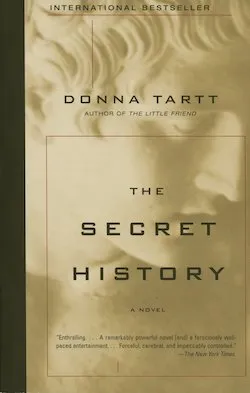
In Donna Tartt’s “The Secret History” the protagonist has a dream about talking to a dead person.
This is actually the way the book ends, but it’s excellent psychology. This friend of hers met a tragic end, dying at the end of the book, and so she’s haunted by him.
It’s a way to give their relationship a little bit of closure, letting her talk to him in her dream.
Which reminds me, by the way, of a dream I had a couple of weeks ago. […] I went inside one of these new buildings. It was like a laboratory, maybe, or a museum. My footsteps echoed on the tile floors. There was a cluster of men, all smoking pipes, gathered around an exhibit in a glass case that gleamed in the dim light and lit their faces ghoulishly from below. “I thought I’d find you here,” said a voice at my elbow. It was Henry. His gaze was steady and impassive in the dim light. Above his ear, beneath the wire stem of his spectacles, I could just make out the powder burn and the dark hole in his right temple. I was glad to see him, though not exactly surprised. “You know,” I said to him, “everybody is saying that you’re dead.” He stared down at the machine. The Colosseum… click click click… the Pantheon. “I’m not dead,” he said. “I’m only having a bit of trouble with my passport.”
This one uses dream logic — he says he’s having trouble with his passport and his movements are restricted — a nice metaphor for a waystation after death.
It’s also a nice way to let the book end on their relationship, even though he’s already gone. One strategy would be to have a flashback, but a dream works perfectly well, too.
5. Dreams Stoking Fears

One of the most common dreams is a fear dream. We dream of what we’re frightened by.
And so it makes sense that fiction should include fear dreams as well.
In Han Kang’s “The Vegetarian,” a woman has a fear dream about meat, about being trapped in a closet full of meat.
Dark woods. No people. The sharp-pointed leaves on the trees, my torn feet. This place, almost remembered, but I’m lost now. Frightened. Cold. Across the frozen ravine, a red barn-like building. Straw matting flatting limp across the door. Roll it up and I’m inside, it’s inside. A long bamboo stick strung with great blood-red gashes of meat, blood still dripping down. Try to push past but the meat, there’s no end to the meat, and no exit. Blood in my mouth, blood-soaked clothes sucked onto my skin.
And it is this dream that causes her to become a vegetarian. So you can also use dreams as a catalyst to get your character to change, to make a strong decision. It’s important to have “trigger events” in your book to cause a character to change their course, and a dream can be an excellent trigger event.
6. Dreams as Foreshadowing
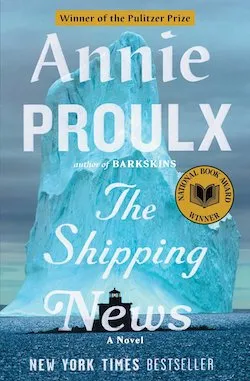
In Annie Proulx’s “The Shipping News” the daughter has a dream that the house has fallen into the sea.
And on the very next page, the very next day, the house does fall into the sea (it’s on a cliff overlooking the ocean).
“But Bunny went up the howling chimney, sailed against the wind and across the bay to the rock where the green house strained against the cables. She lay on stone, looked up. A shingle lifted, tore away. A course of bricks flew off the chimney like cards. Each of the taut cables shouted a different bull-roarer note, the mad bass driving into rock, the house beams and timbers vibrating. The walls chattered, shot nails onto the heaving floors. The house strained toward the sea. A crack, a whistle as a cable snapped. Glass burst. The house slewed on grating sills. The cables shrilled. at the freed corner, fell, lifted. Glass broke. A second cable parted. Now the entire back of the house rose as if the building curtsied, then dropped. Cracking beams, scribbles of glass, inside the pots and pans and beds and bureaus skidding over the floors, a drawer of spoons and forks down the tilt, the stairs untwisting.A burst of wind wrenched the house to the east. The last cables snapped, and in a great, looping roll the house toppled.Shrieking. Awake. Scrambling across the floor to get away. The wind outside proving the nightmare. Quoyle lurched through the door, grasped the kicking child. He was frightened for his daughter. Who was mad with fear.Yet in ten minutes she was calm, swallowed a cup of warm milk, listened to Quoyle’s rational explanation of wind noises that caused nightmare, told him she could go back to sleep if Warren the Second slept on the bed. When he asked cautiously what she had dreamed, she couldn’t remember.”
This dream uses dream logic (in the dream she can fly up the chimney and across the bay).
She also can’t even remember what the dream was about — so it’s not foreshadowing for the characters, but for the reader.

7. Guilt Dreams
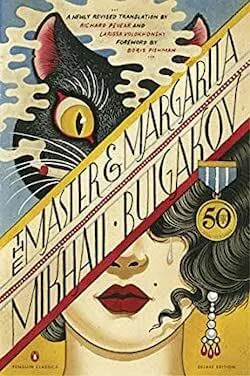
In “The Master and the Margarita,” the protagonist Nikanor Ivanovich has an extended dream. It’s long — 3400 words, and takes up a whole chapter.
And in it, he’s on trial, being accused of hiding foreign currency (in Russia, back mid-20th century, it was illegal to hold foreign money). He’s essentially projecting his sense of fear and guilt inside this dream.
It starts in a way that seems influenced by the book of Revelation:
“Nikanor Ivanovich then had a dream, which was undoubtedly influenced by his recent experiences. It began with some men carrying golden trumpets leading him, with great solemnity, to a pair of huge painted doors, where his companions blew a fanfare in Nikanor Ivanovich’s honour. Then a bass voice boomed at him from the sky:”
But there’s another level to this dream as well. The whole dream is a critique of the restrictions of Russia at the time. And what’s more, when he stops dreaming and wakes up, then he goes into another dream. A doctor gives him a sedative, and within five sentences he starts dreaming again, about Jesus being crucified:
“They were soon silent again and he began dreaming that the sun had already set over Mount Golgotha and that the hill was ringed by a double cordon…”
So we have two long dreams back to back, making the book feel incredibly surreal.
8. Dreams as Symbols
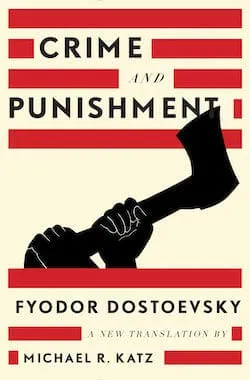
In Crime and Punishment, we see a dream symbol. Raskolnikov is thinking about killing an old landlady. But does he dream directly about that? No.
Instead, he dreams of a man killing a horse. Just beating a horse to death, mercilessly.
And when he wakes, he automatically knows the dream really isn’t about killing the horse — he knows the horse was a metaphor for the old woman.
Raskolnikov dreamed a terrible dream. He dreamt that he was a child again, back in the little town they used to live in. He was a boy of seven, walking one holiday with his father outside the town. […] The blow was a crushing one; the mare staggered, sank down, and then made another effort to get up, but the crowbar struck another swinging blow on her back, and she fell as if her legs had been cut from under her. ‘Finish her !’ shouted Mikolka, and jumped down, quite beside himself, from the cart. A few of the young men, as drunk and red in the face as he, snatched up whatever came to hand-whips, sticks, the shaft-and ran to the dying mare. Mikolka stationed himself at the side and belaboured her back at random with the crowbar. The wretched animal stretched out her muzzle, drew a deep, labouring breath, and died. […]He woke panting and sweating, his hair damp with perspiration, and sprang up in alarm. ‘Thank God, it was only a dream,’ he said, sitting down under a tree and drawing long breaths. ‘But why did I dream it? Can I be starting some sort of fever? It was such a horrible dream.’ His whole body felt bruised, and his mind dark and confused. He put his elbows on his knees and propped his head in his hands.’God !’ he exclaimed, ‘is it possible, is it possible, that I really shall take an axe and strike her on the head, smash open her skull … that my feet will slip in warm, sticky blood, and that I shall break the lock, and steal, and tremble, and hide, all covered in blood … with the axe … ? God, is it possible?’
Bonus Dream Sequences
“a personal matter” by kenzaburo oe:.
Bird was dreaming, groaning in protest against the dawn chill. He is standing on a plateau on the western bank of Lake Chad, east of Nigeria. What can he be waiting for in such a place? Suddenly he is sighted by a giant phacochoere. The vicious beast charges, churning sand. But that’s all right! Bird has come to Africa for adventure, encounters with new tribes and with the perils of death, for a glimpse beyond the horizon of quiescent and chronically frustrated everyday life. But he has no weapon to fight the phacochoere. I’ve arrived in Africa unequipped and with no training, he thinks, and fear prods him. Meanwhile the phacochoere is bearing down. Bird remembers the switchblade he used to sew inside his pants cuff when he was a delinquent in a provincial city. But he threw those pants away a long time ago. Funny he can’t remember the Japanese word for phacochoere. Phacochoere! He hears the group that has abandoned him and fled to a safety zone shouting: Watch out! Run! It’s a Phacochoere! The enraged animal is already at the clump of low brush a few yards away: Bird hasn’t a chance of escaping. Then, to the north, he discovers an area protected by an oblique blue line. It must be steel wire; if he can get behind it he may be safe; the people who left him behind are shouting from there. Bird begins to run. Too late! the phacochoere is almost on him. I’ve come to Africa unequipped and with no training; I cannot escape. Bird despairs, but fear drives him on. Numberless eyes of the safe people behind the oblique blue line watch Bird racing toward them. The phacochoere’s abominable teeth close sharply, firmly, on Bird’s ankle. … The phone was ringing. Bird woke up.
“Ship of Fools” by Katherine Anne Porter
Jenny slept and lived through again in her sleep something she had seen once in broad day, but the end was different as if her memory had patched together two or three unrelated bits and pieces to contrive a meaning for the whole which the separate pieces lacked. During the first month after she began to live with David, she had gone by bus from Mexico City to Taxco, to look at a house there. At noon of the burning bright day they bad slowed down in passing through a small Indian village with the little thick-walled windowless houses sitting along the road, the bare earth swept before each door … As the bus rolled by, Jenny saw a man and a woman, some distance from the group, locked in a death battle. They swayed and staggered together in a strange embrace, as if they supported each other; but in the man’s raised hand was a long knife, and the woman’s breast and stomach were pierced. The blood ran down her body and over her thighs, her skirts were sticking to her legs with her own blood. She was beating him on the head with a jagged stone, and his features were veiled in rivulets of blood. They were silent, and their faces had taken a saintlike patience in suffering, abstract, purified of rage and hatred in their one holy dedicated purpose to kill each other … It was a mere flash of vision, but in Jenny’s memory it lived in an ample eternal day illuminated by a cruel sun, full of the jolly senseless motion of the bus, the deep bright arch of the sky, the flooding violet-blue shadows of the mountains over the valleys; her thirst; and the gentle peeping of newly hatched chickens in a basket on the knees of the Indian boy beside her. She had not known how frightened she was until the scene began repeating itself in her dream, always with some grotesque variation which she could not understand. But this latest time, she had been among the watchers, as if she were at a play, and the two narrow white-clad figures were unreal as small sculptured altar pieces in a country church. Then with horror she saw that their features were changing, had changed entirely — the faces were David’s and her own, and there she was looking up into David’s blood-streaming face, a bloody stone in her hand, and David’s knife was raised against her pierced bleeding breast . . .
Related posts:
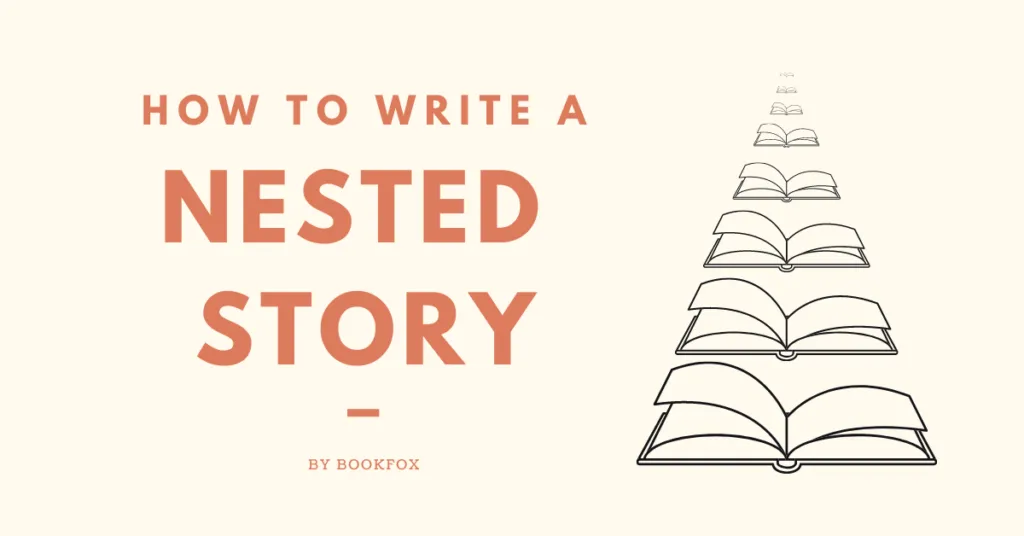
Leave a Reply Cancel reply
Your email address will not be published. Required fields are marked *
One thought on “ 8 Ways to Write a Dream Sequence ”
Thanks so much for this post!

Every writer NEEDS this book.
It’s a guide to writing the pivotal moments of your novel.
Whether writing your book or revising it, this will be the most helpful book you’ll ever buy.
Learn how to:
- Nail chapter endings
- Surprise your reader with plot twists
- Describe a character for the first time
- Write a killer ending
Stack Exchange Network
Stack Exchange network consists of 183 Q&A communities including Stack Overflow , the largest, most trusted online community for developers to learn, share their knowledge, and build their careers.
Q&A for work
Connect and share knowledge within a single location that is structured and easy to search.
How to write dream sequences?
I'm trying to write a sequence where the main protagonist is taken in their dreams to an archangel. However, I kind of think it sounds a bit childish, as I'm unsure how to structure such a sequence.
Maria’s dreams began to drift into a realm of their own, rapidly changing in front of her eyes, until they were expelled from her mind entirely, and her eyes opened. Welcome.
Personally, I don't think this sounds very professional, or realistic. Could someone provide advice on how to structure sequences like this, and how to say when they begin, and end?
- creative-writing
- Related, not quite a dupe: writers.stackexchange.com/questions/4861/… – Lauren-Clear-Monica-Ipsum Commented Jul 8, 2016 at 20:43
- "Suddenly I was awake but my eyes were closed... – Doctor Zhivago Commented Jul 10, 2016 at 1:54
3 Answers 3
I've written dream sequences, and remembering, a number of different ways. I think the main thing to focus on is having something that fits with your book. If your book is hard buttoned down realistic, then you could go the same route, or you could go decidedly against that making the dream sequence seem more ethereal.
I think the only wrong way to do this is one that confuses the reader and pulls them out of your text. Often we can look for a definitive answer for something like this when we're scared of getting it wrong, and I don't think you really can if you just pick a way and execute on it.
Personally, I like using contrast between the style I'm writing the rest of the story and how I write a dream sequence. It gives me a few extra tools to be able to remind the reader (if it's going on for a while) that they are in a dream.
In the piece you provided, I think it's important not to make the dreams seem separate from Maria. "Maria’s dreams began to drift..." Maria might feel the world drift away or change, but she only has one dream at a time, and so this makes it seem like a collection of dreams left her, which I don't think it what you meant.
Pick the way you like best, make sure that it's clear to the reader, and have fun with it.
I hope this helps.
- I concur. One of the biggest turnoffs for me is when an author believes its clever to try to trick the reader into thinking a dream is reality. Wrong! It only ticks the reader off. There was this immensely popular American drama in the 70's called "Dallas." They wrote themselves into a corner and made an entire season into a dream sequence in the cliffhanger. They only made it one (maybe 2) more seasons after that. – Stu W Commented Jul 9, 2016 at 14:27
Typically, when dreaming, we don't realize we're dreaming, so the way to write that most closely approximates the actual experience of dreaming is just to write as if it were any other scene, but with the unquestioned alterations to reality and believability that are typical of dreams.
Although the character is fooled by the reality of the dream, you probably don't want the reader to be as well. You don't have to be elaborate, just acknowledge that it's a dream and move on.
Maria dreamed she was standing in front of a golden throne, high on a cloud...
Another common way to tip off the reader is to place the dream in italics.
Somehow, Maria found herself standing in front of a golden throne, high upon a cloud
Or, try a simple heading:
Maria dreamed: She was standing in front of a golden throne, high upon a cloud...
Sometimes authors change tense, or from third-person to first-person. These are just ways to suggest an altered state of consciousness.
Maria fell deeply asleep. Suddenly I find myself in front of a golden throne...
Do you dream? If so, what sorts of dreams have you experienced? If not, perhaps reading up on the experiences of others in their dreams may prove beneficial.
Also, are you writing in 1st person or 3rd person, or even switching between views to emphasize the dream sequence? How the events are presented will need to be worded differently depending on the viewpoint.
Last, is the character typically self-introspective? Are they aware that they are dreaming? Should they be aware from the beginning that they are dreaming? Presenting a given scene or sequence as factual to the reader may cause dissonance if later the character views those events as only a dream. Other combinations are possible too, each with a slightly different impact. What do you wish to evoke?
As for myself, I dream extensively, so I have learned over the years some of the logic my particular dream environment operates on. In discussing dreams with others, I have also learned that shared characteristics of dream environments are only occasional, and unique arrangements per person seem to be the norm.
If I may suggest, perhaps a recounting of the bits she sees, more of a visual journey. Perhaps she realizes that she is dreaming, and then is when the next scene takes place. After establishing the dream state, then change it to the vision state.
Your Answer
Reminder: Answers generated by artificial intelligence tools are not allowed on Writing Stack Exchange. Learn more
Sign up or log in
Post as a guest.
Required, but never shown
By clicking “Post Your Answer”, you agree to our terms of service and acknowledge you have read our privacy policy .
Not the answer you're looking for? Browse other questions tagged fiction creative-writing structure or ask your own question .
- Featured on Meta
- Join Stack Overflow’s CEO and me for the thirteenth Stack IRL Community Event...
- Bringing clarity to status tag usage on meta sites
Hot Network Questions
- Are fuel efficiency charts available for mainstream engines?
- Parsing and processing "resolvectl statistics" output using awk
- Real life examples of pseudo-metrics
- How do you make the vacuum seal on a glass jar?
- Flats on gravel with GP5000 - what am I doing wrong?
- Are there many more verbs like 'abflauen' where the basic infinitive 'flauen' does not exist?
- A short story called "Of Jovian Build" , who wrote it?
- Do US universities invite faculty applicants from outside the US for an interview?
- Why is Stam Mishna attributed to R' Meir, a fourth-generation Tannah?
- Could a lawyer agree not to take any further cases against a company?
- How many color information loss if I iterate all hue and value while keep saturation constant?
- traceroute (UDP) lost packets
- Finding nearest edge from face center
- What is the least number of colours Peter could use to color the 3x3 square?
- Is the white man at the other side of the Joliba river a historically identifiable person?
- What is the missing fifth of the missing fifths?
- Advice how to prevent sin
- What's the best format or way to generate a short-lived access token?
- How to raise and lower indices as a physicist would handle it?
- subtle racism in the lab
- Advanced Composite Solar Sail (ACS3) Orbit
- What are the steps to write a book?
- Textile Innovations of Pachyderms: Clothing Type
- What is this phenomenon?

Dream Sequences In Writing: Uncover Inner Worlds
In the realm of storytelling, a dream sequence is our secret weapon for delving into a character’s subconscious.
It’s a narrative technique that reveals desires, fears, and internal conflicts without the constraints of reality.
We’ve all experienced the surreal nature of dreams, and in writing, dream sequences harness that same ethereal quality to enhance the story.
They’re not just flights of fancy but a powerful tool that, when used effectively, can transform the narrative landscape.
What Is A Dream Sequence In Writing
Dream sequences are a distinct narrative tool used by writers to jump into a character’s psyche.
They function as a window into their fears, desires, and innermost thoughts.
Through dream sequences, storytellers can bend the rules of their narrative worlds, allowing for surreal and symbolic scenarios that provide deeper understanding of a character.
In movies like Inception , dream sequences demonstrate complex emotional and psychological landscapes.
The layering of dreams within dreams adds a multifaceted dimension to the storytelling.
This technique is not confined to the realm of film alone – novels like Alice in Wonderland use dreams to escape the bounds of reality, engaging readers in a fantastical journey that reflects the protagonist’s growth and self-discovery.
Utilizing dream sequences requires a balance – they must be coherent enough to follow but bizarre enough to differentiate from reality.
- Bring metaphors and symbols to life,
- Reveal hidden feelings and internal turmoil,
- Bypass logical story progression for emotional resonance.
These elements converge to craft scenes that, while disconnected from the actual events, resonate with thematic significance and character development.
Enhanced by the limitless potential of visual storytelling, filmmakers weave dream sequences into their narratives to evoke a response that pure dialogue or action might not achieve.
The Purpose Of Dream Sequences
Dream sequences serve a multifaceted role in storytelling.
They are crucial for character development and plot enhancement.

In cinematic narratives, directors employ dream sequences for various important reasons:
- To reveal the subconscious fears and desires of characters,
- To foreshadow future events in the narrative,
- To symbolize abstract concepts and emotional states,
- To break away from the linear progression of the plot for creative storytelling.
Dreams allow viewers to step into the minds of characters.
Here, the inaccessible thoughts and emotions surface, painting a vivid picture of the character’s inner world.
Films like Inception showcase the boundless nature of dreams, weaving them into the fabric of the storyline to shape character arcs and plot twists.
Dreams can also act as a vessel for symbolism and metaphor .
They present abstract ideas in tangible forms, enabling viewers to engage with the characters on a deeper level.
The cult classic Mulholland Drive uses surreal dreamscapes to blur the lines between dreams and reality, challenging audiences to decipher the true narrative.
Narrative creativity thrives within the realm of dreams.
Filmmakers push the boundaries, creating sequences that might otherwise be out of place in the grounded realm of the film’s reality.
A dreamscape can transport characters – and viewers – to any time, place, or dimension, defying the constraints of conventional storytelling.

By employing dream sequences, filmmakers can subtly guide the audience’s interpretations.
Dreams act as a mirror, reflecting the emotional state or transformation of the character throughout the film.
Our understanding of the characters becomes enriched as we’re offered a glimpse into their deepest layers of consciousness.
Harnessing the power of surrealism, films like Eternal Sunshine of the Spotless Mind use dreams to navigate through complex human emotions and memories.
These sequences jump into the intricacies of relationships and personal identity, permitting storytelling that resonates on a more profound level.
Creating Vivid Imagery
To capture an audience’s imagination, dream sequences must paint a sensory-rich picture.
We ensure that every element – from the unfolding scenery to the smallest sound – is woven together to create an immersive experience.
Sound design, color grading, and visual effects all play crucial roles in amplifying the surreal quality of dreams.
By heightening the senses, we bring the inner world of characters to life.
Bold colors , dramatic shadows, and haunting echoes can transform simple scenes into memorable dreamscapes.
Techniques like slow motion or reverse footage often enhance the dream’s otherworldly feel.
Lighting is a potent tool in our arsenal for crafting dream sequences.
It’s not just about visibility; it manipulates mood and focuses attention.
Strategic lighting choices can suggest the ethereal or the nightmarish depending on the narrative’s needs.
Dreams deal with symbols and metaphors, and we pay attention to symbolic detail.

Objects in dreams aren’t always what they appear.
They might represent:
- A character’s hidden desire,
- An impending decision,
- A past event casting a shadow on the present.
Incorporating symbolism demands a delicate balance – the audience must sense the weight of these symbols without being overwhelmed.
We craft motifs that resonate throughout the film, creating layers of meaning that viewers may unravel over time.
Narrative elements can be subtly distorted in dream sequences to create a sense of uncertainty.
The familiar becomes strange, and the straightforward becomes complex.
We break the mold of reality to showcase a character’s internal conflicts and aspirations without the constraints of the tangible world.
Through carefully choreographed cinematography, we craft dream scenes that feel both otherworldly and intimately connected to the character’s journey.
Every frame is designed to contribute to a larger narrative tapestry, blurring the lines between reality and the subconscious.
Revealing Inner Thoughts And Emotions
Dream sequences in scriptwriting cut through the facade of characters to expose their vulnerabilities.
They allow us to peer into the private chambers of the mind.
In these sequences, characters often confront emotions and desires they can’t in their waking lives.
The audience gains privy to fears and aspirations otherwise left unspoken.
Filmmakers craft scenes that heighten the character’s internal drama.
Sharp visuals and distorted sound design reflect the emotional turbulence within.
Italics serve as visual cues for dreams in literature, guiding readers into the character’s subconscious.
Through this stylistic choice, readers transition smoothly into the character’s deeper consciousness.
Consider Inception , where dreams within dreams reveal the complexities of guilt and loss.
Here, the narrative peels back layer after layer of personal struggle.
Dream sequences afford us a surreal palette to paint our protagonist’s inner conflict.
A stormy sea or a crumbling edifice can symbolize inner chaos vividly.
In Eternal Sunshine of the Spotless Mind , the dreamscape is a battlefield of heartache and memory.
It’s as much a character in the story as the protagonists themselves.
By understanding the dream’s purpose, we align our audience with the protagonist’s journey.
Their revelations become our own as we traverse the dreamscape together.
To maintain clarity and impact in these sequences, we focus on:
- Strong visual metaphor s,
- Heightened sensory elements.
Dreams are not random; they’re woven intricately into the storyline to propel the narrative.
Meticulous planning ensures every dream sequence feels purposeful and enriching.
The power of dream sequences lies in their dual ability to mystify and clarify.
They add depth to storytelling by providing a glimpse of the truth lying beneath the surface of our characters.
Establishing Symbolism And Foreshadowing
Dream sequences offer a unique storytelling device – they are rife with symbolism and often serve as a prelude to future events in a narrative.
By weaving subtle clues and meaningful symbols into these sequences, filmmakers provide audiences with insight into the plot’s direction without overt exposition.
Characters in dreams might encounter symbols that represent their innermost fears or desires.
For example, a wilting flower might signify lost love, while a looming storm cloud could foreshadow impending danger.
These symbols, when decoded by the viewer, add layers of depth to the narrative arc.
In film, color plays a significant role in establishing mood and foreshadowing.
A drastic shift to a monochromatic palette, for instance, might indicate a character’s descent into despair.
On the other hand, vibrant splashes of color could signal a character’s hope or creativity bursting forth.
Surreal and distorted dreamscapes can also hint at a character’s future challenges or decisions.
The following elements frequently appear to hint at what’s to come:
- Mirrored surfaces reflect a character’s dual nature or identity crisis.
- Mismatched or illogical sequences suggest internal conflict or confusion.
- Encounters with significant characters in dreams often preview important real-life interactions.
Sounds and music incorporated into dream sequences layer additional meaning and can signal future plot twists.
A recurring lullaby might point to a childhood memory that holds the key to a character’s current predicament, while dissonant chords could herald a disruption in the character’s life.
Attention to detail in crafting dreams is critical as they guide the viewer subtly toward understanding the character’s journey.
By tapping into the rich tapestry of symbolism and foreshadowing, we convey complex plot developments and character evolution in a deeply intuitive and visually engaging manner.
Exploring Dream Sequences In Writing: Uncover Inner Worlds – Wrap Up
Dream sequences are a powerful narrative device that we’ve seen can unlock the subconscious, offering us a deeper understanding of characters.
They’re not just a flight of fancy but a strategic storytelling technique that can foreshadow events, reveal hidden emotions, and symbolize greater themes.
By crafting these sequences with careful attention to visual and sensory details, filmmakers and writers create an immersive experience that resonates with audiences.
It’s in these dreamy interludes that we often find the essence of a character’s journey, the heart of their conflicts, and the seeds of their transformation.
As we’ve explored, the artful use of dreams in storytelling is both a mirror to the soul and a window to what lies ahead, making them an indispensable tool in the writer’s arsenal.
Frequently Asked Questions
What purpose do dream sequences serve in storytelling.
Dream sequences allow writers to explore a character’s subconscious, reveal their innermost thoughts, fears, and desires.

They act as a creative tool to foreshadow events, symbolize abstract concepts, and break from linear storytelling.
How Do Dream Sequences Enhance Audience Engagement With Characters?
Dreams invite audiences into the characters’ minds, fostering a deeper connection and understanding of their emotional states and psychological transformations.
What Technical Elements Are Essential In Creating Effective Dream Sequences?
Effective dream sequences often utilize sound design, color grading, visual effects , lighting, and strong symbolism to create vivid and surreal imagery that captivates the audience’s imagination.
Why Is Symbolism Important In Dream Sequences?
Symbolism in dreams represents hidden desires, important decisions, or past events, conveying deeper meanings and offering insights into a character’s internal conflicts and aspirations.
How Can Dream Sequences Reveal A Character’s Internal Drama?
By distorting reality and blurring the subconscious with the conscious, dream sequences visualize internal conflicts and heightened emotional states, helping to dramatize a character’s internal struggles.
Can Dream Sequences Foreshadow Future Events In A Story?
Yes, dream sequences can use elements like color, surreal landscapes, character encounters, and distinctive sounds to drop subtle clues and hints about future developments in the narrative.
What Is The Impact Of Dream Sequences On The Depth Of Storytelling?
Dream sequences can mystify and clarify plot elements, adding layers of complexity by showcasing truths about the characters that may not be evident on the surface.
Dependent Clauses In Writing: Tips & Techniques
Dionysian Imitatio Explained: Transforming Writing
Matt Crawford
Related posts, what is comedy definition, examples and how to write it, what is tautology in writing: definition & examples, what is passive voice in writing and screenwriting: complete guide, what is a mad scientist definition & examples, what is sibilance: the complete guide, what is animorphism in storytelling and writing a look at character transformation, leave a reply cancel reply.
This site uses Akismet to reduce spam. Learn how your comment data is processed .
Username or Email Address
Remember Me
Registration is closed.
Pin It on Pinterest

WANT GET MORE CLIENTS & GROW YOUR VIDEO COMPANY TO 7-FIGURES PER YEAR?
Enter Your Details Below!
Get the Reddit app
https://discord.gg/7nu2Zz8StN
This subreddit is dedicated to those of us who are writing in the fantasy genre.
How to write a dream sequence (not cliche)
I'm doing a project for school and want to include a dream sequence for my story, but i dont know how. Im already two chapters in and want my character to experience an episode, but im unsure if it should be an entire new chapter or even how to start. PLS TIPS
By continuing, you agree to our User Agreement and acknowledge that you understand the Privacy Policy .
Enter the 6-digit code from your authenticator app
You’ve set up two-factor authentication for this account.
Enter a 6-digit backup code
Create your username and password.
Reddit is anonymous, so your username is what you’ll go by here. Choose wisely—because once you get a name, you can’t change it.
Reset your password
Enter your email address or username and we’ll send you a link to reset your password
Check your inbox
An email with a link to reset your password was sent to the email address associated with your account
Choose a Reddit account to continue
SLAP HAPPY LARRY
Dreaming in storytelling.

James Thomas Linnell – Firs and Furze
You may not remember dreaming after you sleep, but you’ll encounter many dream sequences in books.
Dreams, daydreams, visions, prophecies, processes of memory… all of these count as ‘dream sequences’.
THE DREAM ARGUMENT
The dream argument is the postulation that the act of dreaming provides preliminary evidence that the senses we trust to distinguish reality from illusion should not be fully trusted , and therefore any state that is dependent on our senses should at the very least be carefully examined and rigorously tested to determine whether it is in fact reality. Wikipedia
WHAT IS DREAMING?
Our brain profoundly alters its behaviour and purpose, dimming our consciousness. For a while, we become almost entirely paralyzed. We can’t even shiver. Our eyes, however, periodically dart about behind closed lids as if seeing, and the tiny muscles in our middle ear, even in silence, move as though hearing. We are sexually stimulated, men and women both, repeatedly. We sometimes believe we can fly. We approach the frontiers of death. We sleep. National Geographic, Sleep Science in the Era of Screens
FREUD AND DREAMS
Whatever your thoughts on Freud, and Freud’s emphasis on dreams as insights into a person’s psychology, dreams can play a useful role in character development. Whether dreams carry significance in real life I’m not so sure, but as literary convention… It’s pretty much accepted. This acceptance started with the modernist movement, of which Katherine Mansfield was a part.
John Anster Fitzgerald – The Stuff that Dreams are Made Of
DREAMS AND WRITING TECHNIQUE
1. sneaky dreaming.
There was a nail in the bed. It had cut into her face and made it bleed.
And the reader thinks, ‘Oh god, what has the man done to her?’ and then it gets more and more ridiculous, but it’s kind of sexual so I won’t quote it here because I don’t want that kind of spam comment.
Anyway, by the end of the scene the reader is left in no doubt that the protagonist is mid-dream. This technique works because it only happens once in the entire novel (after which it may get tiresome). The dream/nightmare gives the reader insight into the protagonist’s greatest fears. (I’m not sure that dreams really do indicate a person’s greatest fears — I’m not much of a Freudian — but nevertheless, I accept that this is the case in fiction. )
2. DREAMING AS A CENTRAL PART OF THE PLOT
John Irving’s short story Other People’s Dreams is a prime example of this. It’s about a man who has never dreamed in his life, but then he discovers that by sleeping where others have dreamed, he can dream what they have. He learns a few things along the way, including a few surprises about his own mother.
So these kind of stories aren’t using dreams as a device, they just happen to be stories whose plots somehow involve dreams. The reader therefore doesn’t feel tricked.
Some of the best children’s novels and picturebooks are dream narratives, in which dreams are not merely a parable used to illuminate the main plot, but constitute the plot itself. Sometimes the narrative is explicitly stated to be a dream, as in Alice’s Adventures In Wonderland ; more often it is implied , as in Tom’s Midnight Garden . While Alice, on waking up, is comfortably relieved of the necessity of taking responsibility for her actions in the dream, the character of Marianne Dreams finds that there is a significant connection between her dreams and her real life. Picturebooks allow vast possibilities in the interaction of word and image to create ambiguity of meaning in dream narratives… in many cases [the dream narrative] is also more inventive and imaginative than most of the mainstream dream narratives.
3. SNIPPETS OF DREAM INTERSPERSED THROUGHOUT NARRATIVE/DIALOGUE/ACTION SCENES
In this case, the dream snippet functions like backstory snippets, and in fact a snippet of a dream seen in the past is kind of a subcategory of backstory. This works on the presumption that dreams mean something, be it in a supernatural way, or simply because the protagonist’s mind has been playing something out, thereby highlighting its significance.
Robert McKee, in his scriptwriting guidebook Story, likens dream sequences to montage sequences:
In the American use of this term, a montage is a series of rapidly cut images that radically condenses or expands time and often employs optical effects such as wipes, irises, split screens, dissolves, or other multiple images. The high energy of such sequences is used to mask their purpose: the rather mundane task of conveying information. Like the Dream Sequence, the montage is an effort to make undramatized exposition less boring by keeping the audience’s eye busy. With few exceptions, montages are a lazy attempt to substitute decorative photography and editing for dramatization and are, therefore, to be avoided.
In The Chocolate War , Robert Cormier describes Jerry’s dream a moment before he wakes up:
He’d been dreaming of a fire, flames eating unknown walls, and the siren sounded, and then it wasn’t a siren but the telephone.
Since we know from the first sentence that Jerry dies, this nightmarish start to the day is foreshadowing events to come. A dream can also indicate worry and trauma from the previous day. In Jerry’s case it’s the prank calls:
In bed once more, small in the dark, Jerry willed his body to loosen, to relax. After a while, sleep plucked at him with soft fingers, soothing away the ache. But the phone rang in his dreams all night long.
4. DID THAT REALLY HAPPEN, OR DID IT NOT?
What do you think of this technique? I really like incomplete or ambiguous endings, but I’m not a huge fan of bringing something from the imaginary world into the real world of the story. That seems to have the opposite effect, of telling the reader, “Yes, it really did happen, so you’d better believe in magic”.
5. DREAMING ABOUT A LOVE INTEREST
I dreamed about walking in Eddie’s garden. I’m wearing a long, white dress and I’ve got on this big-ass straw hat and I’m holding up my skirt so it won’t get dirty. from What Looks Like Crazy On An Ordinary Day
And those two sentences pretty much sum up the voice of this book.
6. FORESHADOWING THE FUTURE
Can the subconscious mind alert us to the future? from Psych Central
7. DREAMING AS INSIGHT INTO A CHARACTER’S DEEPEST DESIRES
See examples of that in Katherine Mansfield’s short stories, notably:
John Anster Fitzgerald – The Artist’s Dream
OR WAS IT A DREAM?
If you’re a fan of both Breaking Bad and Malcolm In The Middle you’re sure to appreciate the spoof ‘leaked’ alternative ending of Breaking Bad , which involves Bryan Cranston in bed with his Malcolm In The Middle wife, Jane Kaczmarek. Hal wakes from a dream, in which he recounts the basic plot of Breaking Bad. Lois comforts him and blows it off as pure fantasy.
Of course, young children haven’t necessarily seen this done before, and are likely to be mighty impressed by this narrative trick.
Maria Nikolajeva points out that although frowned upon in creative writing class, this dream ending is alive and kicking in children’s literature.
Children’s books with ready solutions bind the child’s imagination and free thought. It is treachery towards the modern sophisticated child reader to offer a “rational” explanation at the end. “And then he woke up and it has only been a dream.” We should not think that this ending is a thing of the past , for we remember it from Alice In Wonderland . It is repeated in much later texts , and one discovers it somewhat reluctantly in Mordecai Richler’s prize-winning book Jacob Two-Two Meets The Hooded Fang (1975) and in a many even more recent texts. Critical and creative authors find such resolutions very unsatisfactory, and regard the open ending as the only possible way of appealing to modern young readers. Children’s Literature Comes Of Age , Maria Nikolajeva
Most recently I saw this used to good effect in The Polar Express , in which the boy is left with a sleigh bell that only children can hear.
DREAMS, QUESTS AND GENDER
Strange as it may seem, few dream narratives involve girls , that is, the nature of the dream quest is seldom unquestionably female and not possible with a male character […] Fanny and the Birds/Fanny och fåglarna (1995), by Margareta Stromstedt and Tord Nygren, depicts the character’s transformation, but unlike into the jaguar of Not Now, Barnard , this transformation is not into a huge and fierce beast, but into a little frail bird (does this reflect the authors’ idea of male aggressiveness contra female gentleness?). How Picturebooks Work by Nikolajeva and Scott
Meanwhile, Greg Heffley of Wimpy Kid fame is an equally unreliable narrator but in quite a different way. His unreliability comes from misunderstanding or sardonically judging reality to be worse than it actually is. It doesn’t involve detailed fantasies.
NOTES FROM POP CULTURE’S HAPPY HOUR
After Andrea’s brother, Francis, disappeared, everything changed. Her world turned upside down, and there was nothing she could do to right it. So when she discovers a magical dream world called Reverie in the woods near her home, Andrea jumps at the chance to escape her pain and go inside. But the cost of admission is high: Andrea must give up a memory in order to enter. And she knows exactly which memory she’d like to give up.
Will Andrea and her new friend Penny have what it takes to find Francis, figure out what’s really going on in Reverie, and break free from this nightmarish dream world?
NOTES FROM 2010 CHELTENHAM LITERARY FESTIVAL
Below are some takeaway points from a lecture given at the 2010 Times Cheltenham Literary Festival.
RELATED TERMINOLOGY
Imagism was a movement in early-20th-century Anglo-American poetry that favoured precision of imagery and clear, sharp language. It gave modernism its first start, and is considered to be the first organized Modernist literary movement in the English language.
‘Imagistic’ describes something which subverts the rules of the rational, mainstream world and substitutes with a form which feels familiar but which is invaded by the irrational, the surreal , the magically real , the absurd and the symbolic .
Showing spontaneous and undirected playfulness
PHANTASMAGORIC
having a fantastic or deceptive appearance, as something in a dream or created by the imagination.
Header illustration: James Thomas Linnell – Firs and Furze
CONTEMPORARY FICTION SET IN AUSTRALIA AND NEW ZEALAND (2023)
Now his beloved uncle has died. An intensifying fear manifests as health anxiety, with night terrors from a half-remembered early childhood event. To assuage the loneliness, Sam embarks on a Personal Happiness Project:

St. Petersburg
We don't just write RESUMES. We write new lives.

St. Petersburg’s Premiere Resume Writing Service and Professional Resume Writers
GET YOUR Resume Written by one of our Professional Resume Writers Today!
Sequence provides a wide array of job search, career planning and professional resume writing services for career-minded individuals. At Sequence, as part of our resume writing services, we have a team of professional resume writers, branding and candidate marketing specialists who are highly capable of developing your resume, building your brand, and transforming your career plans into action to achieve your personal goals and expectations. From resume assistance to resume writer service and professional resume writing help, find out why local St. Petersburg residents turn to Sequence time and time again to write their resume.
Special 5% Discount Available if you Live Local to the St. Petersburg Area!
Use discount code 2017city5.
We interact daily with some of the most well-known and respected employers in the marketplace. We are especially known for providing job seekers an exceptional level of professional and personalized service and expertise in career planning, personal branding and candidate marketing for the finest positions with leading organizations throughout the United States and around the world. We have written resumes for every conceivable role.
There are things you learn after engaging with thousands and thousands of professionals to write their resumes. Our expertise in this regard is unparalleled. Additionally, we proudly partner on a regular basis with some of the most professional organizations, government agencies and companies in these sectors.
As a St. Petersburg local, trust our professional resume writers to help you develop a powerful resume.

Choose Your Résumé Package Today.
St. Petersburg is nicknamed “The Sunshine City” for its 361 days per year of sunshine – it holds the world record for consecutive days of sunshine with 768. The top industries in the city are healthcare, retail, and financial/investment services.
City Website: www.stpete.org
Chamber of Commerce: www.stpete.com
County Website: www.pinellascounty.org
Situated in Pinellas County, with a population of 257083, the City of St. Petersburg is unique as one of Florida’s Largest Municipalities (Ranked #80 in the Nation!).
Economy / Education
The economy for St. Petersburg is expected to show a Projected 5-Year Growth Rate of 3.2%. It is also fairly educated with 89.5% having earned a high school diploma and 30.2% of residents having earned a Bachelor or Higher. All helping to make the city one of the state’s most competitive markets for job seekers.
Industry Sectors
Industries sectors for St. Petersburg and Pinellas County are diverse and encompass Advertising, Aerospace, Finance, Government, Health Care, Information Technology, Media, Retail, and Utilities.
Major Employers
Major employers in the area include: All Children’s Hospital, Bright House Networks, Ceridian Benefits Services, Church of Scientology, Cox Target Media, Duke Energy, Franklin Templeton Investments, HSN Inc, Jabil Circuit Inc, Largo Medical Center, Lincare, Macy’s, Mease Countryside Hospital, Morton Plant Hospital, Pinellas County, PSCU Financial Services, Raymond James Financial, St Anthony’s Hospital, St Petersburh Business Development, Tech Data Corp, US Veterans Medical Center, and Valpak Direct Marketing.
Area / Size
St. Petersburg is surrounded by or in close proximity to the cities of: Belleair, Belleair Beach, Belleair Bluffs, Belleair Shore, Clearwater, Dunedin, Gulfport, Indian Rocks Beach, Indian Shores, Kenneth City, Largo, Madeira Beach, North Redington Beach, Oldsmar, Pinellas Park, Redington Beach, Redington Shores, Safety Harbor, Seminole, South Pasadena, St. Pete Beach, Tarpon Springs, and Treasure Island.
It incorporates area code 727 and zip codes 33701, 33703-33705, 33710, 33712-33713, and 33715.
With Consideration of the size, market and diversity of St. Petersburg, it is more important than ever to have a resume writing service with professional resume writer craft a resume that helps you stand apart from others in the job market.
Don’t Just Advance Your Career
Advance your life. And harness the power of a custom-designed resume today.
It’s time to get started
We Are Sequence

The premier resume writers and writing experts for professional and technical industries in St. Petersburg.
Everyone has a story. At Sequence our resume writers have been pioneering the art of telling stories compellingly through custom resumes and high impact professional career branding materials for more than a decade.
Just as you are more than a worker with an assigned number, your resume is more than a simple piece of paper communicating dates, titles and tasks. You are a dedicated professional, craftsman, innovator, leader and in many cases artist of your trade. A unique brand.
But no one will know this in today’s hyper-competitive job market where impressions and decisions are made quickly and data is systematically processed unless you can articulate your message and that brand.
On average, in our experience, you have just 9 seconds to make an initial impression. Decisions happen that fast. Only a custom produced resume, exclusive to you and crafted to “catch an eye” by a Sequence expert knowledgeable of the distinct demands of your industry will enable you to make that impression. Gaining this competitive advantage over others in today’s St. Petersburg area job market is something individuals turn uniquely to Sequence for again and again.
Learn more about what our professional resume writers can do for you.

Trusted by major professional associations
We interact daily with some of the most well-known and respected employers in niche professional and technical marketplaces throughout the United States and internationally. We have also partnered with leading professional trade associations engaged in these industries.
Because of our collaboration with these trade organizations, we have become trusted experts and consultants providing an array of career planning and resume writing services. Our expertise in these key industry sectors is widely recognized and sought after because we understand the fields inside and out. Beyond resume preparation, our professional resume writing services are unique because we know specifically what employers in St. Petersburg are looking for and how best to market your resume and get it moved to the top of the pile.
We are particularly noted for serving as keynote speakers and leading an assortment of career planning related seminars, workshops, resume clinics, and special sessions on career branding and resume writing for organizations like the American Planning Association, International Code Council, among others, and lending our industry-specific expertise to career-minded professionals in our country’s leading industry sectors.
Key difference between Sequence and others? We don’t just write resumes and branding materials, we impart valuable expertise and educate individuals about how to use these tools to get jobs, obtain better compensation and further their careers.
Learn More About Why We Are A Trusted Partner

Build your resume and professional profile for the digital age
Generic and basic resumes of the past no longer work in today’s new digital age. In our world of electronic media, large HR databases, impersonal connections, and strong competition for fewer jobs, you must cleverly navigate through these unseen obstacles to rise above all others if you hope to have any chance of being seen and heard.
Producing a resume and professional profile for St. Petersburg locals that successfully moves you through these perilous channels and elevates you to consideration or an interview requires a special effort, keen skills and adaptability. At Sequence, we understand ATS systems, absorption, keywords, and various applications and have the expert know-how to produce personal brand marketing materials that get you noticed. In addition to profession and executive resume writing services, we are experts at writing custom LinkedIN and Social Media profiles that go beyond paper into digital- one of the reasons we are noted as the best resume writing service by our satisfied customer.
We know and understand what employers are looking for in a job candidate. It’s why our products and online resume writing services are geared towards garnering the attention of employers and can significantly increase your brand awareness in the St. Petersburg job marketplace.
More than ever, your resume and profile are the key to successful employment and career advancement. Failure to craft these properly is not an option. Trust Sequence to create a resume / digital profile and help you build and market your brand online.
Learn how you can get the competitive edge
Sequence Resumes’ parent company, Sequence Staffing, is the premier executive recruitment firm committed to providing employment solutions for the core enterprises responsible for planning, building and maintaining our communities, infrastructure, natural resources, and environment throughout the United States and around the world. We interact daily with some of the most well-known and respected employers throughout the U.S. and around the world. Unlike other local resume companies, we know and understand what employers are looking for in a job candidate when creating a resume. It’s why our products and online resume writing services are geared towards garnering the attention of employers and can significantly increase your brand awareness in the job marketplace. Our industry-specific experts and resume writers will personally work with you directly to develop the most powerful, comprehensive resume package that will highlight your knowledge, skills, experience, education and training, and key characteristics and attributes that clearly demonstrate to employers how you are the best match to the opportunity. As a St. Petersburg local, discover why our resume writing services and professional resumes writers can create the most compelling and best resume to empower you in your career.
Every Resume Package Includes
Sequence’s Revolutionary VITAE EXERCISE I-Book & Materials!

The professional assigned to me is by far the best career coach I have worked with. He took the time to get to know each of his clients, and creates a plan of attack will help you achieve your goals. No “Cookie-Cutter” shortcuts

15%! That was the jump in raise due to the Resume, so thank you once again for the effort on this. I can now have money to help out my family back home… Great Job guys!!
Live the life you’ve always wanted.
Let us write your resume, and get you that career you’ve been searching for.
Discover Pricing & Packages

IMAGES
VIDEO
COMMENTS
Learn how to use dreams in your fiction to advance your plot or characters, and how to write realistic dream scenes with logic and consistency. Find out the dos and don'ts of writing dream sequences, and see examples from literature and film.
Learn how to write dream sequences that captivate and intrigue your readers by exploring the subconscious of your characters. This guide covers dream logic, tense and perspective, symbolism and metaphor, transitions, narrative distance, reflection, and revision.
Nov 17, 2022. 4 min read. "And It Was All a Dream!": Writing Dream Sequences. Dreams are the most organic stories we have. They are the unconscious mind at work, conjuring freely and without intervention. Many a writer has been inspired by their dreams, and there are countless stories that note the parallel between dreaming and storytelling.
How to Show a Dream Sequence in a Novel: Writing Guide
Learn how to write dream sequences that serve your story, characters and themes, rather than being a lazy screenwriting tool. Find out how to balance surreal and realistic elements, apply consistency and logic, and create subjectivity in your screenplay.
Learn how to write dream sequences in film that serve the story, define the logic and avoid the flashback dream. See examples from Terminator 2, Dumb and Dumber, Superbad, Scott Pilgrim vs. the World and Inception.
End on one that best seems to fit the mood of the day. Now you have a dream sequence. If it seems inconsequential, that's good. Beware dreams of great import—unless you're writing about the Virgin Mary. Let the dream become part of the character's fabric and, thus, the fabric of the novel. Good luck and have fun.
A dream sequence is a part of a story that depicts a character's dream, often revealing their subconscious thoughts and emotions. Learn the types, tips, and techniques of writing a dream sequence that mimics the chaotic, disorienting, yet meaningful nature of dreams.
Dream sequences are often a cheap way of expressing information and disempowering characters. They are usually not the definition of a dream sequence, which is when a story begins in the middle of the action or turning point.
Learn how to create a dream sequence that is true to what a dream is like and that moves your story forward. Find out eight things to consider before writing a dream sequence, such as research, structure, time, reaction, and visualization.
Learn how to use dreams in your fiction with examples from Coetzee, Bolano and Dostoevsky. Avoid the three worst ways to write a dream sequence and discover the seven best ways to create mystery, reveal desires, explore themes and more.
A dream sequence is a section of a film in which the characters are experiencing a dream. Dream sequences are frequently used to convey information that cannot otherwise be shown within the narrative; for example, if the film is a mystery, the dream sequence will reveal the murderer. More frequently, however, dream sequences "take advantage ...
3. I'm trying to write a sequence where the main protagonist is taken in their dreams to an archangel. However, I kind of think it sounds a bit childish, as I'm unsure how to structure such a sequence. Maria's dreams began to drift into a realm of their own, rapidly changing in front of her eyes, until they were expelled from her mind ...
In the realm of storytelling, a dream sequence is our secret weapon for delving into a character's subconscious. It's a narrative technique that reveals desires, fears, and internal conflicts without the constraints of reality. We've all experienced the surreal nature of dreams, and in writing, dream sequences harness that same ethereal ...
A dream sequence is a scenario where the character is experiencing something that he wouldn't in the real world. You have to decide what that is. If your character is starving, maybe his dream is based on Cloudy with a chance of meatballs. Maybe stuck in the classroom and can't get out. Whatever.
John Anster Fitzgerald - The Stuff that Dreams are Made Of DREAMS AND WRITING TECHNIQUE 1. SNEAKY DREAMING. At the conclusion of Chapter 4, 'Magic Phenomena' of The Men's Room by Ann Oakley is a dream scene. After a space break, the sequence begins:
Morgan's Creative Writing Services, Saint Petersburg, Florida. 481 likes · 2 talking about this. Copywriting SEO Academic Writing Document Typing Resumes Graphic Design Proofreading/Editing
Saint Petersburg Shredding - (727)286-3595. When it comes to Florida mobile shredding Legal Shred Inc. is the place to go. With the most advanced shredding equipment on the market today Legal Shred can visit your location and shred 10 boxes in 3 minutes.
Morgan's Creative Writing and Computer Services, Saint Petersburg, Florida. 144 likes. Writing and Design company. Business promotional services such as logos, cards, flyers, and ads. Ads
We Are Sequence. The premier resume writers and writing experts for professional and technical industries in St. Petersburg. Everyone has a story. At Sequence our resume writers have been pioneering the art of telling stories compellingly through custom resumes and high impact professional career branding materials for more than a decade.